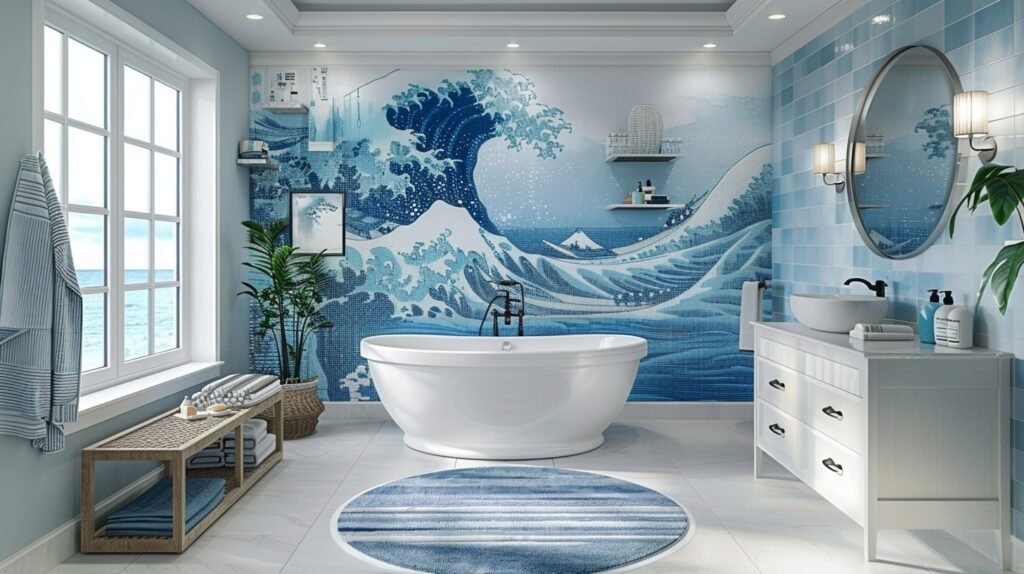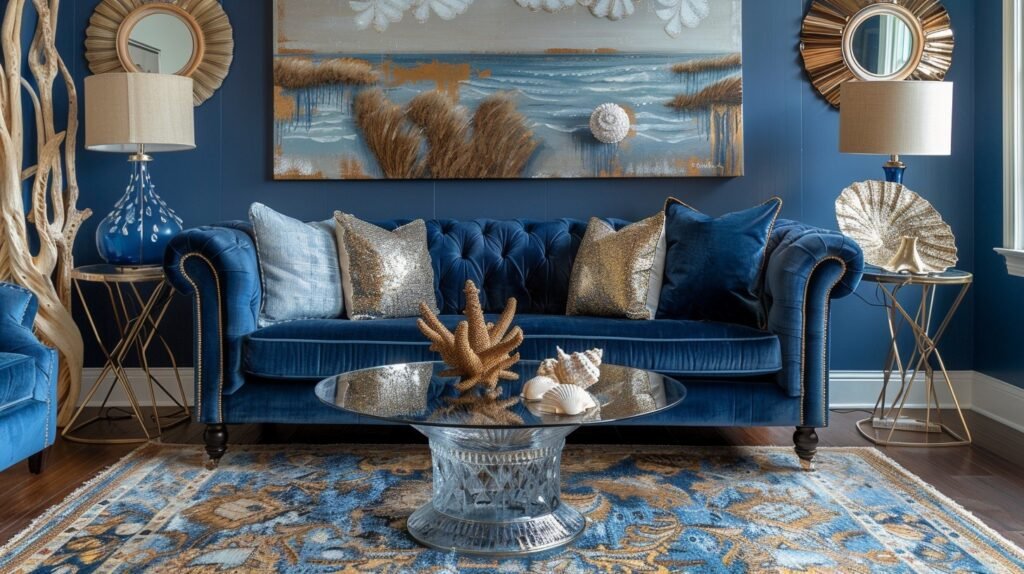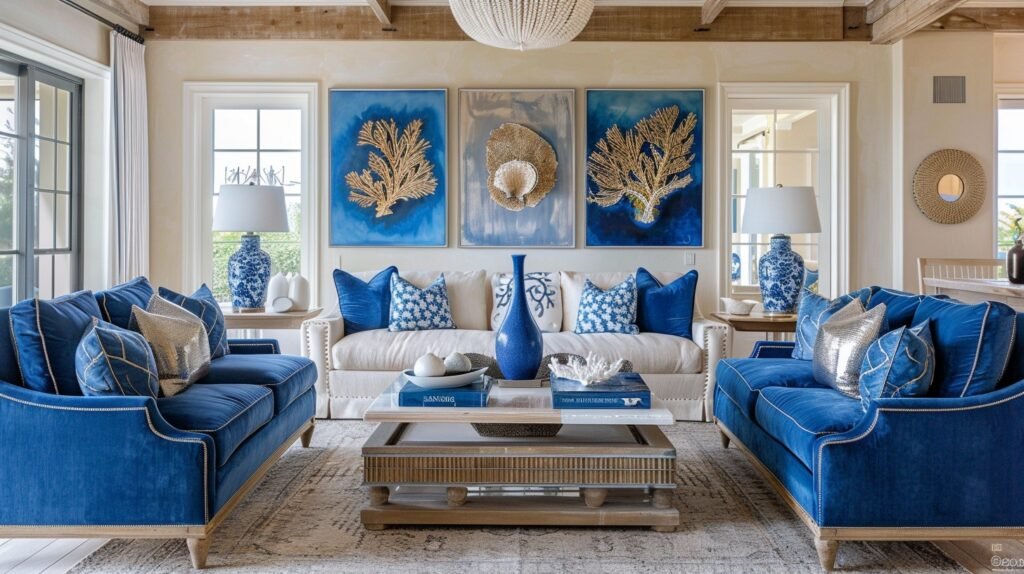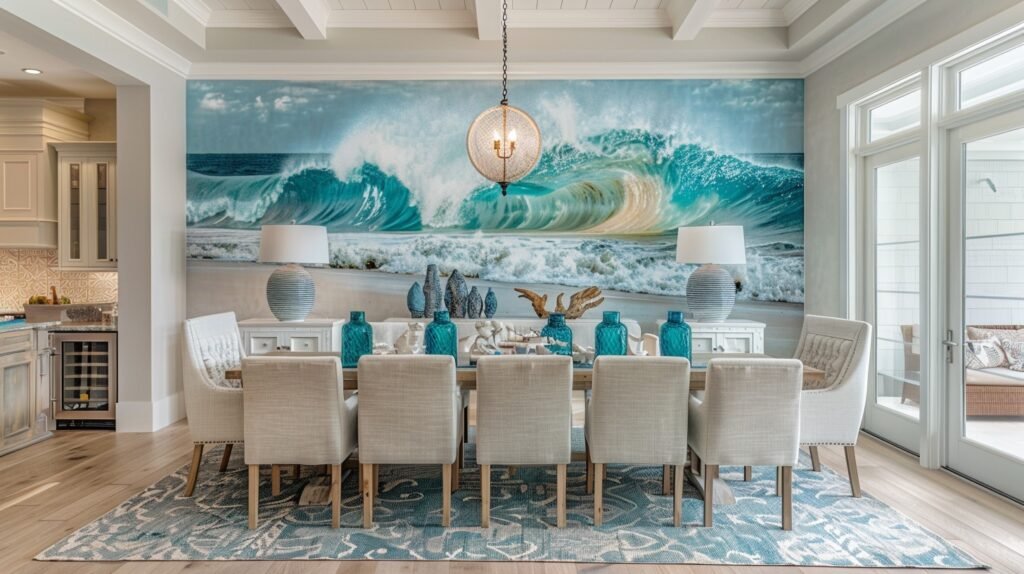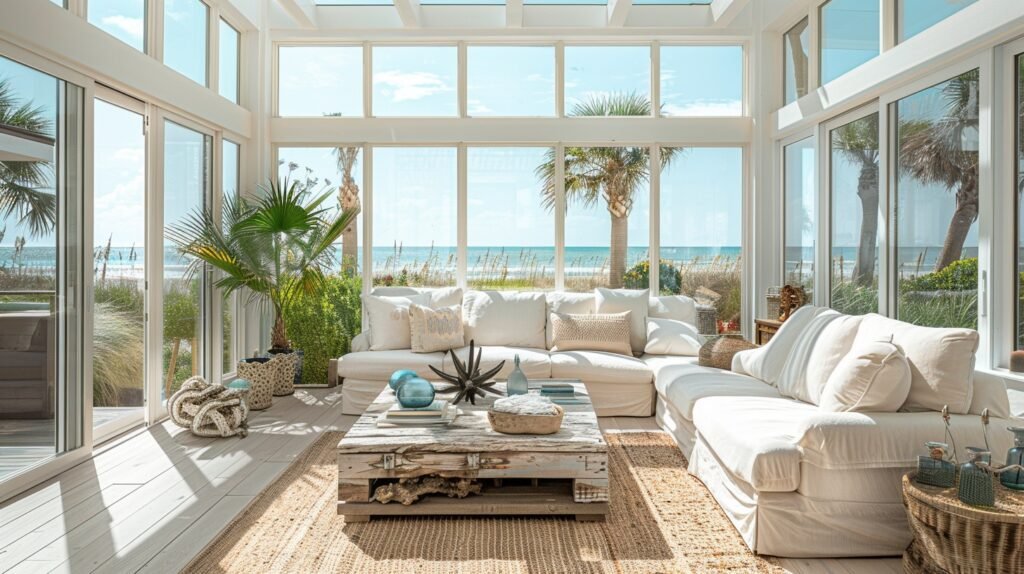Here’s the introduction:
Wabi Sabi, the Japanese aesthetic philosophy that finds beauty in imperfection, impermanence, and simplicity, is magnificently expressed through ceramic art. This comprehensive exploration reveals 29 distinctive approaches to Wabi Sabi ceramics, each celebrating the unique, the aged, and the naturally evolved. From ancient techniques to modern interpretations, these ceramic styles demonstrate how flaws, asymmetry, and raw materiality can transform everyday objects into profound expressions of design and cultural wisdom.
1. Ancient Reflections
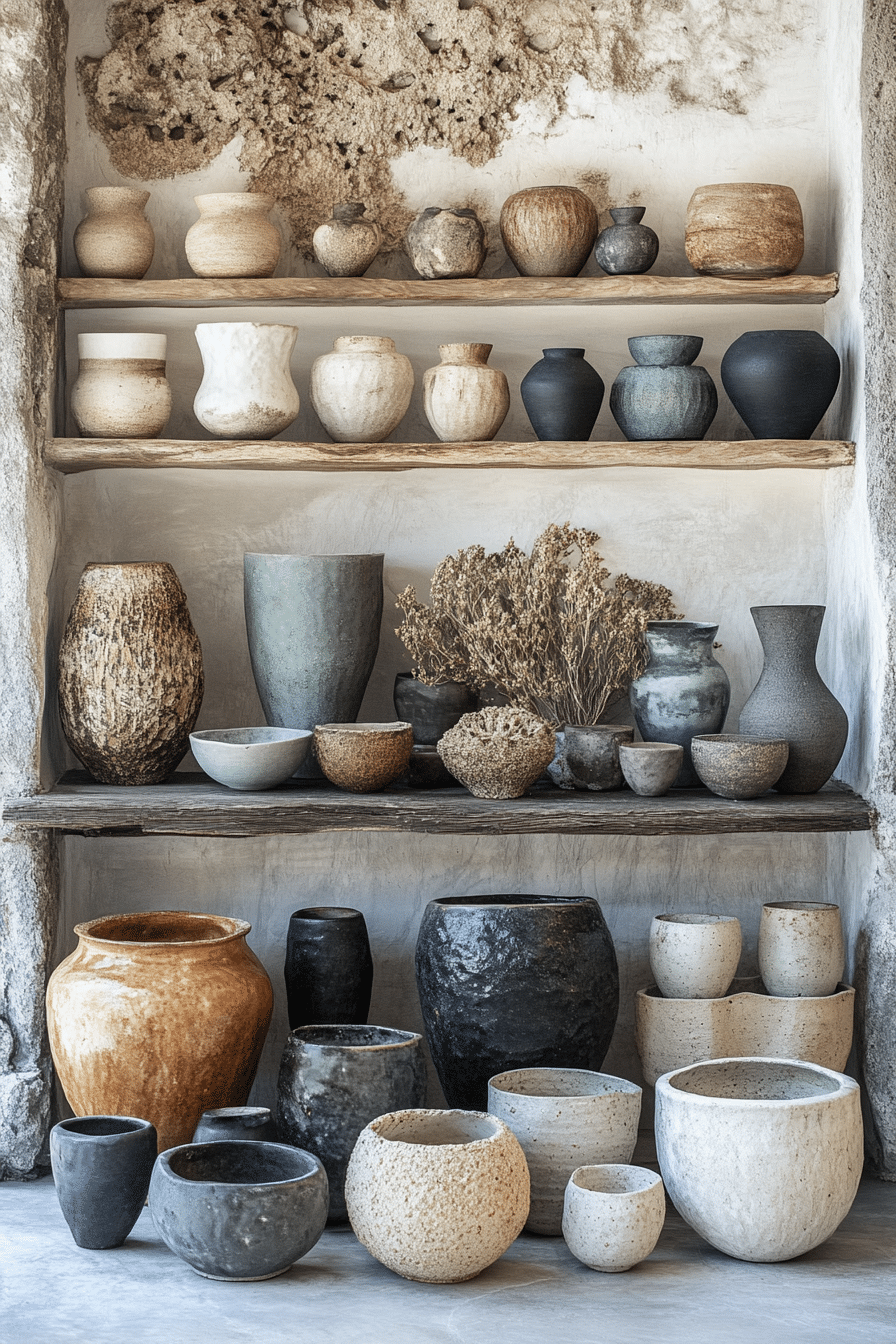
Ancient Reflections in Wabi Sabi ceramics celebrate the timeless history of pottery. These pieces showcase traditional techniques and forms that have endured through centuries. Subtle imperfections like cracks and uneven surfaces highlight the beauty of age and resilience. They bring a sense of heritage and depth to any space, embodying the Wabi Sabi ethos.
2. Flawed Beauty
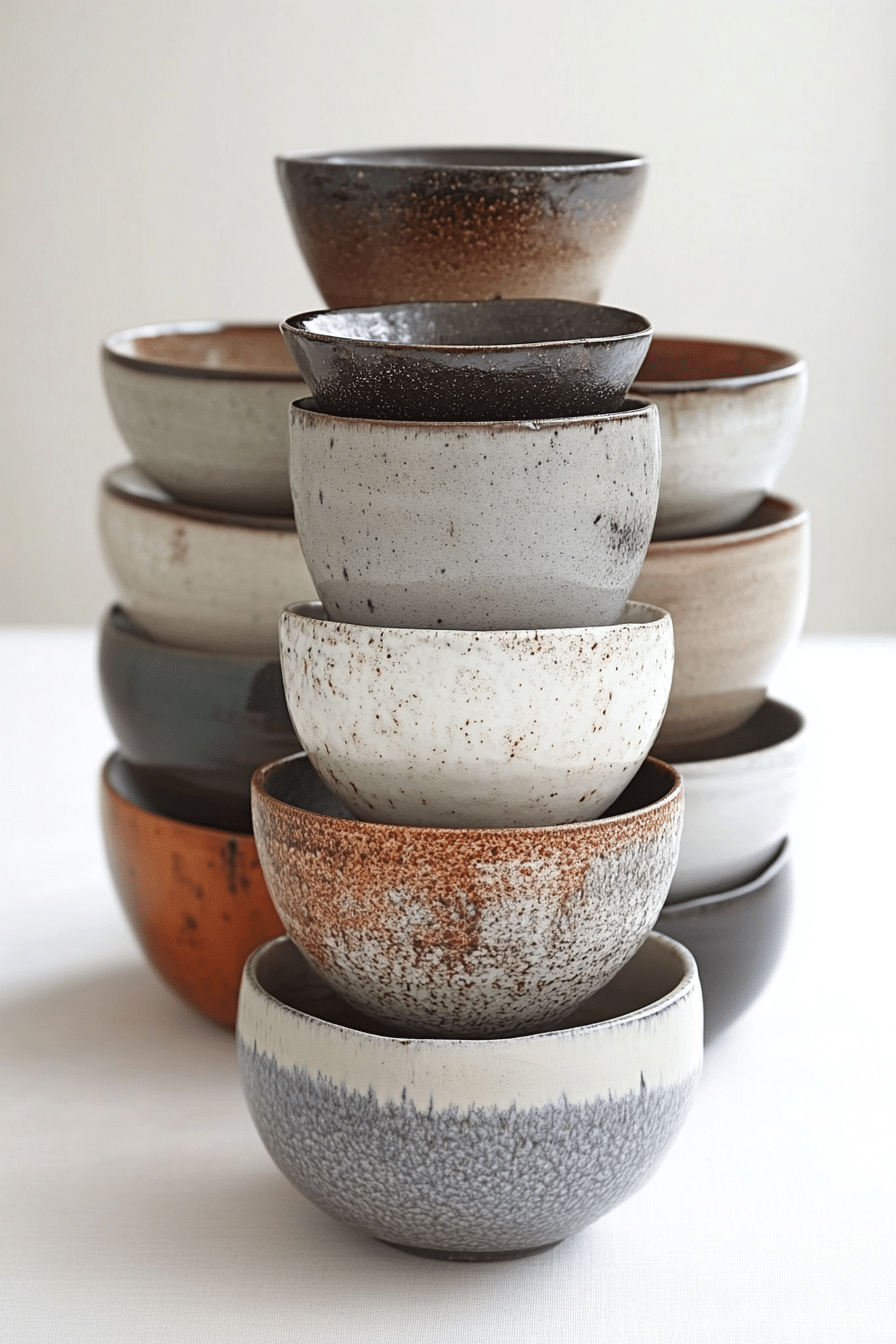
Flawed Beauty in Wabi Sabi ceramics highlights asymmetry and irregular shapes, creating pieces that are truly one of a kind. Each vessel’s imperfections add character and charm, celebrating the handmade over mass production. This approach reflects the Wabi Sabi principle of valuing the imperfect and unique. These ceramics transform any space into a showcase of authentic craftsmanship.
3. Earth’s Simplicity
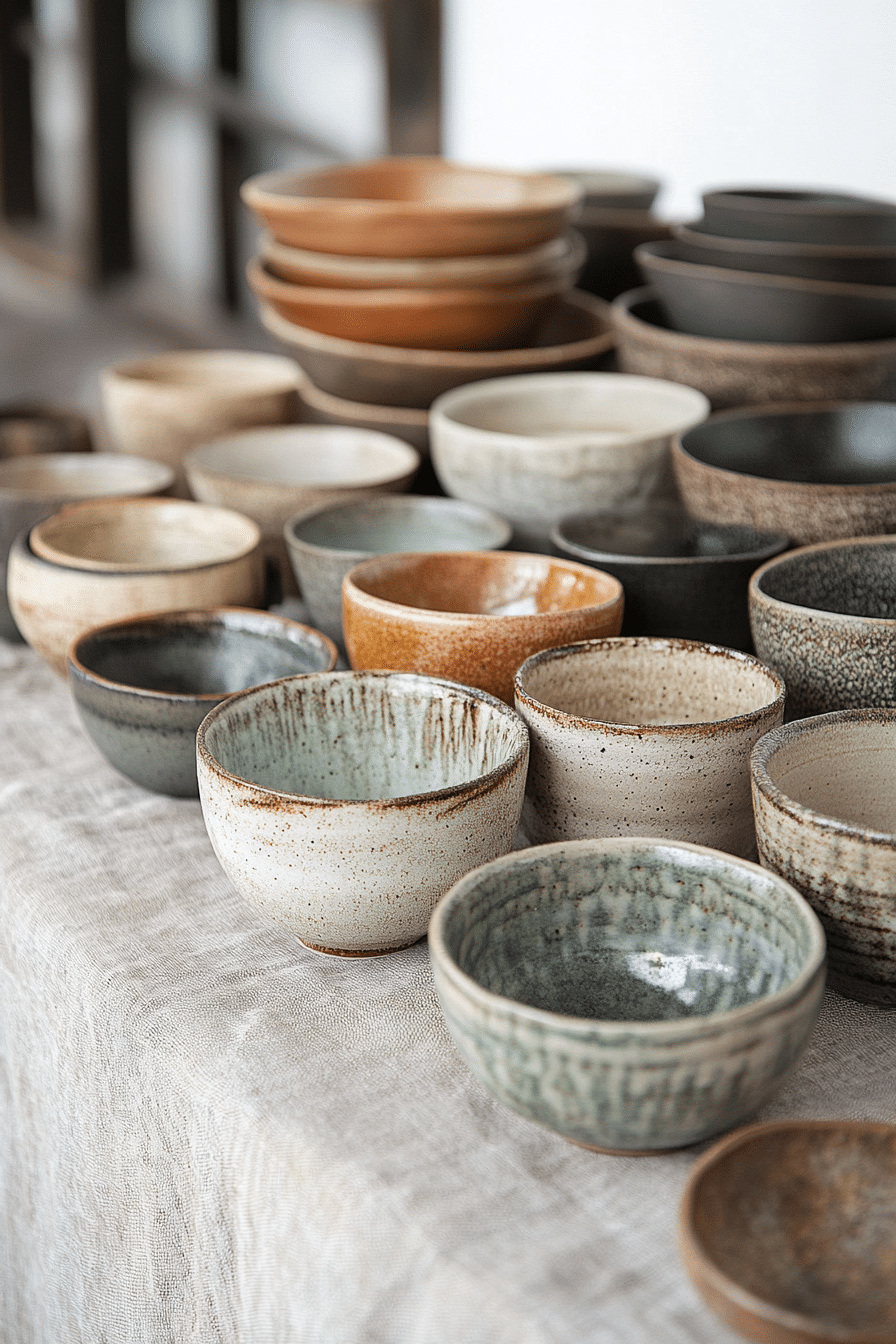
Earth’s Simplicity in Wabi Sabi ceramics focuses on raw, natural clay with minimal decoration. The natural hues and textures of the clay take center stage, embodying simplicity and grounding energy. This aligns perfectly with Wabi Sabi’s appreciation for understated beauty in everyday objects. Such ceramics create a calming and organic atmosphere in any space.
4. Aged Grace
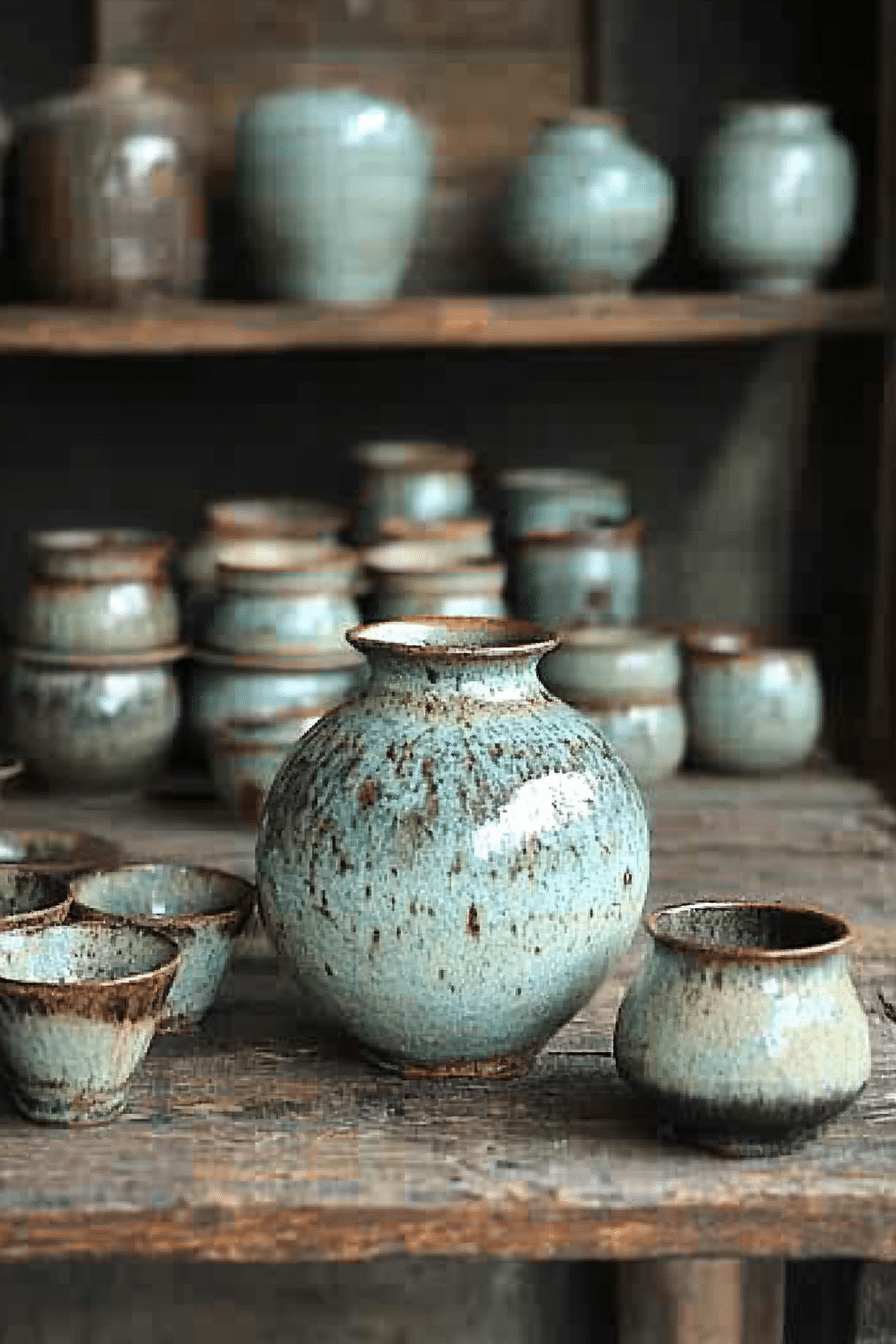
Aged Grace in Wabi Sabi ceramics celebrates the beauty of aged surfaces and patina. These pieces tell stories of time and use, with textures and colors evolving naturally over the years. The Wabi Sabi philosophy values this transformation, finding beauty in aging and imperfection. Aged grace ceramics add depth and a sense of history to any setting.
5. Raku Harmony
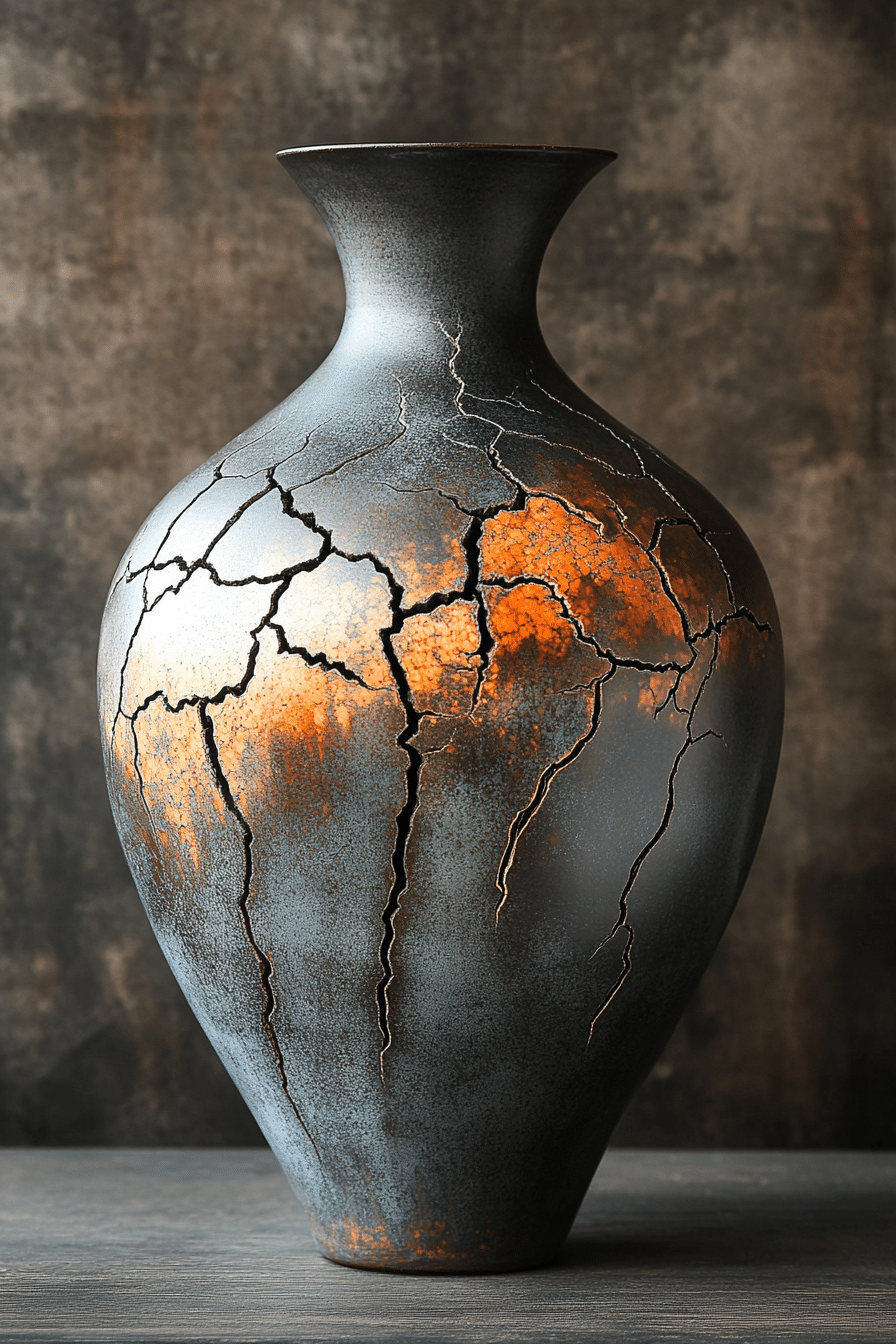
Raku Harmony in Wabi Sabi ceramics showcases the dramatic effects of raku firing, with crackled glazes and smoky patterns. Each piece is one-of-a-kind, embracing the accidental and the imperfect. This unique firing technique aligns perfectly with the Wabi Sabi ethos of finding beauty in the unexpected. Raku ceramics bring bold texture and personality to any space.
6. Crackled Beauty
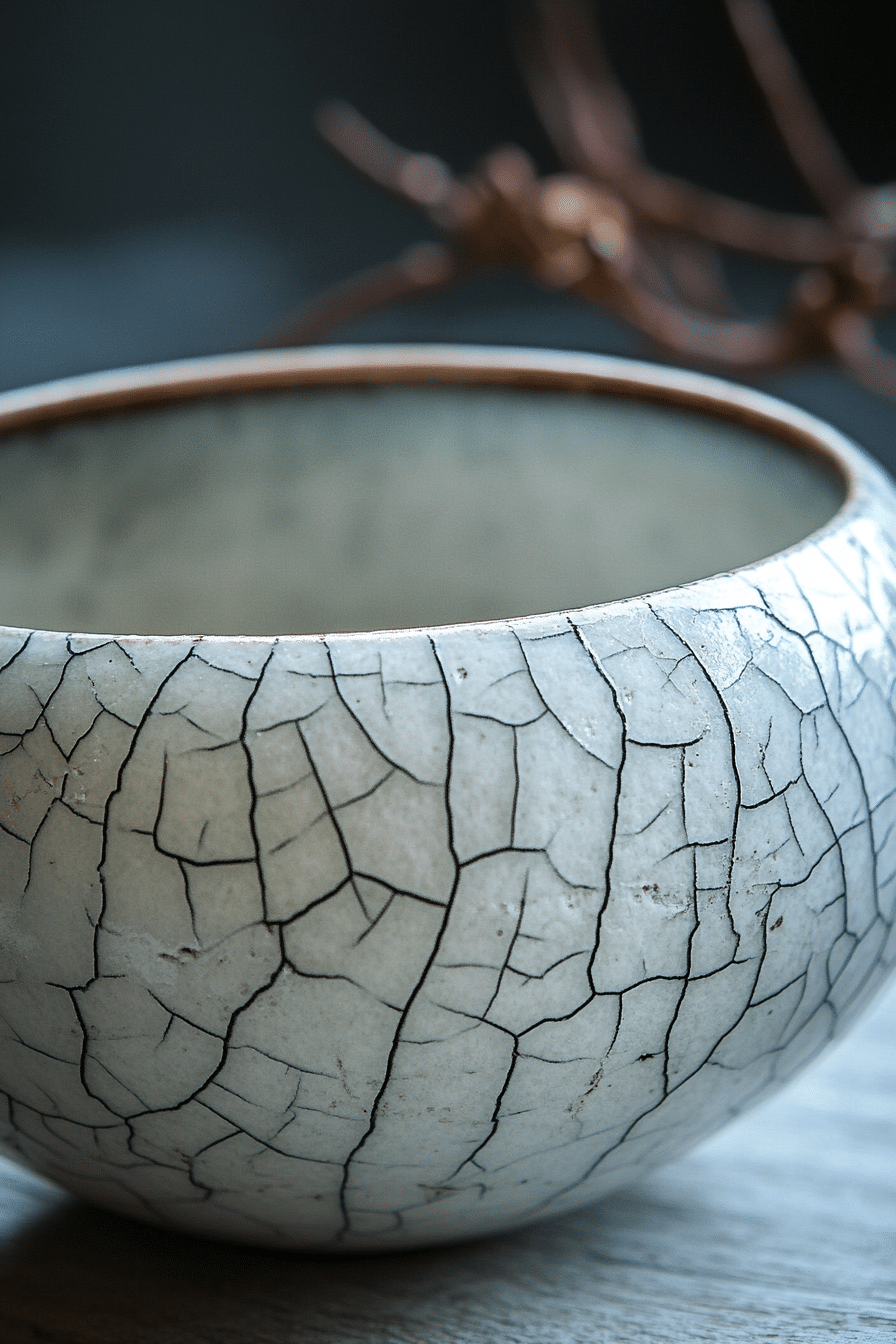
Crackled Beauty in Wabi Sabi ceramics highlights the elegance of visible cracks in the glaze, often enhanced with contrasting pigments. These details represent the acceptance of flaws and the art of embracing imperfection. Each piece carries a story of resilience and transformation. Crackled ceramics add texture and a sense of history to Wabi Sabi decor.
7. Uneven Elegance
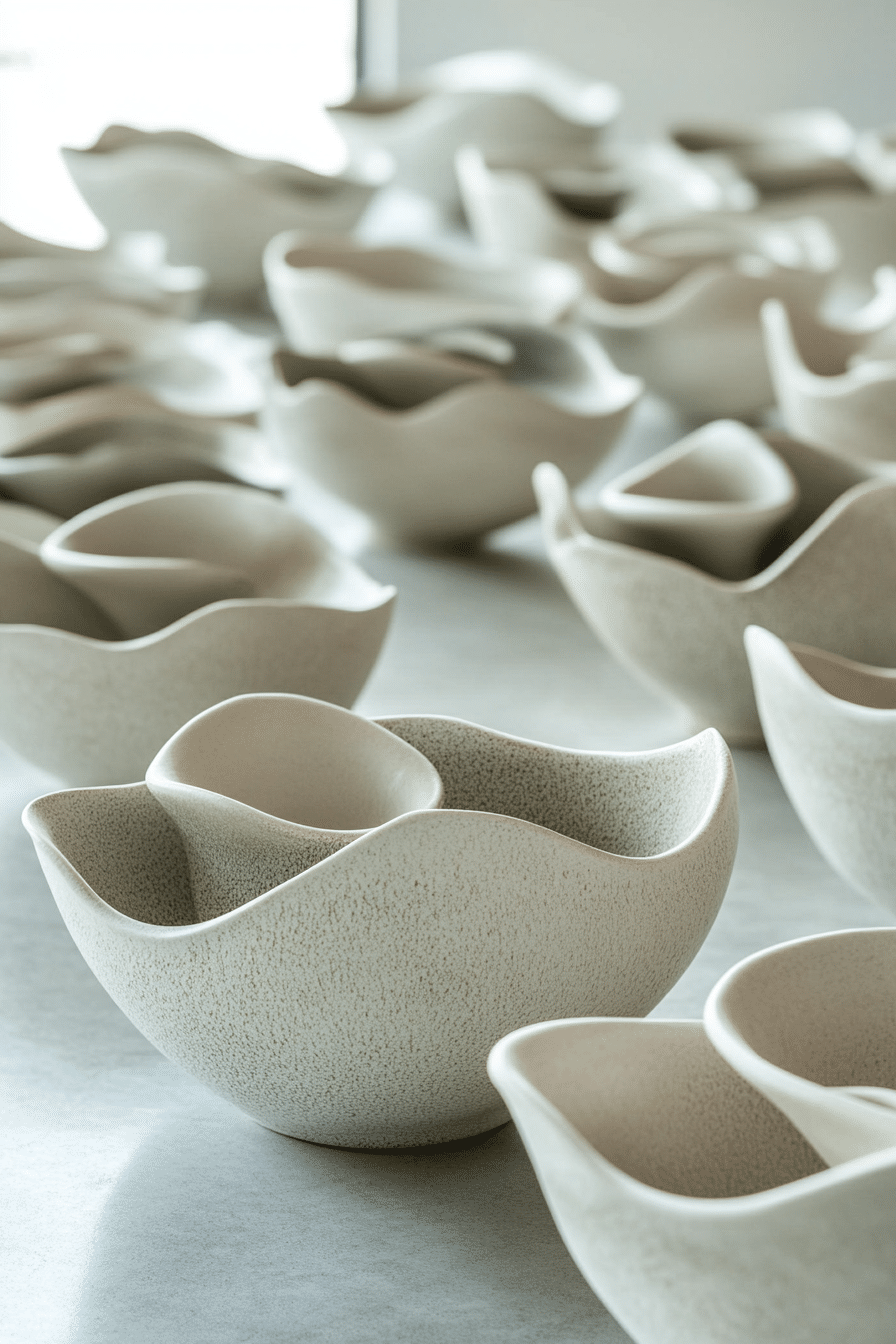
Uneven Elegance in Wabi Sabi ceramics embraces asymmetry and unconventional shapes. These pieces challenge traditional ideas of beauty, focusing on unique forms and unexpected designs. Their irregularity creates intrigue and draws attention, making them focal points in any room. Uneven ceramics celebrate the Wabi Sabi ideal of finding beauty in the unconventional.
8. Terracotta Tales
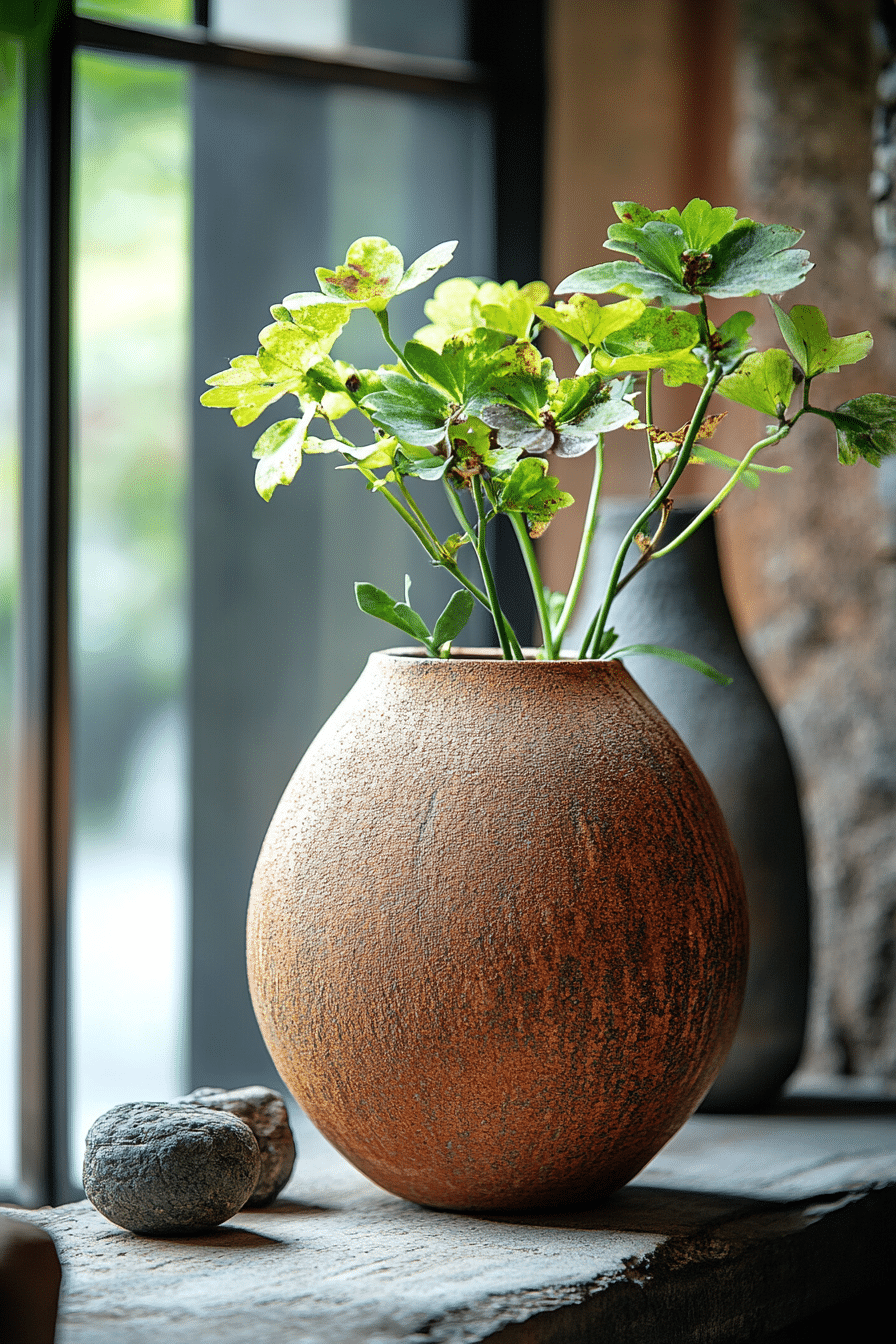
Terracotta Tales in Wabi Sabi ceramics highlight the aging process of this earthy material. Over time, terracotta develops natural changes in color and texture that add character and warmth. These ceramics connect interiors to nature and history, reflecting Wabi Sabi’s love for evolution and imperfection. Time-touched terracotta pieces bring organic charm to any home.
9. Earthy Tones
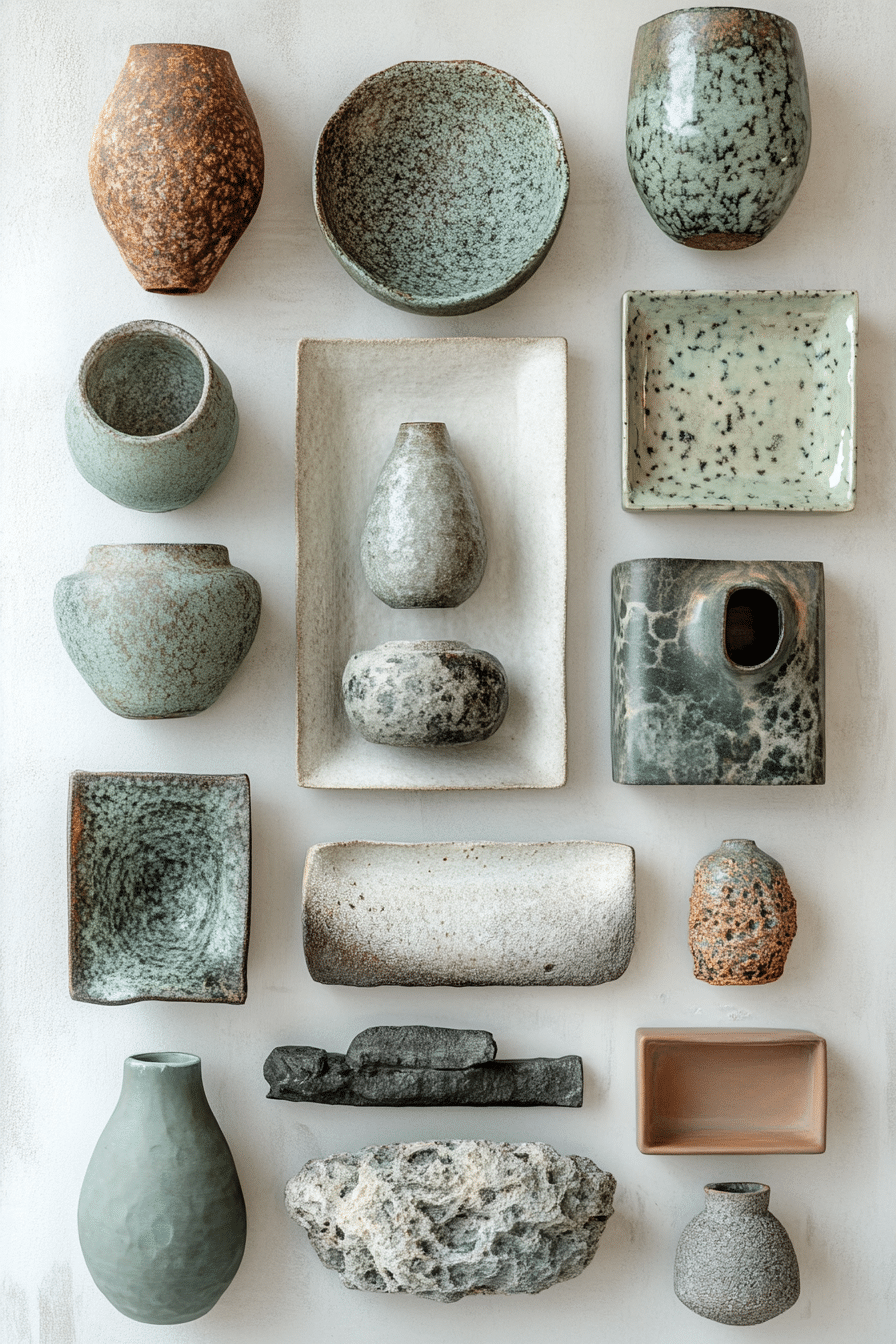
Earthy Tones in Wabi Sabi ceramics draw on natural palettes of browns, greens, and grays, reflecting the organic world. These calming colors blend seamlessly with any decor, adding serenity and balance. Wabi Sabi values these subtle, natural hues for their grounding presence. These ceramics enhance spaces by fostering a connection to nature.
10. Raw Clay Charm
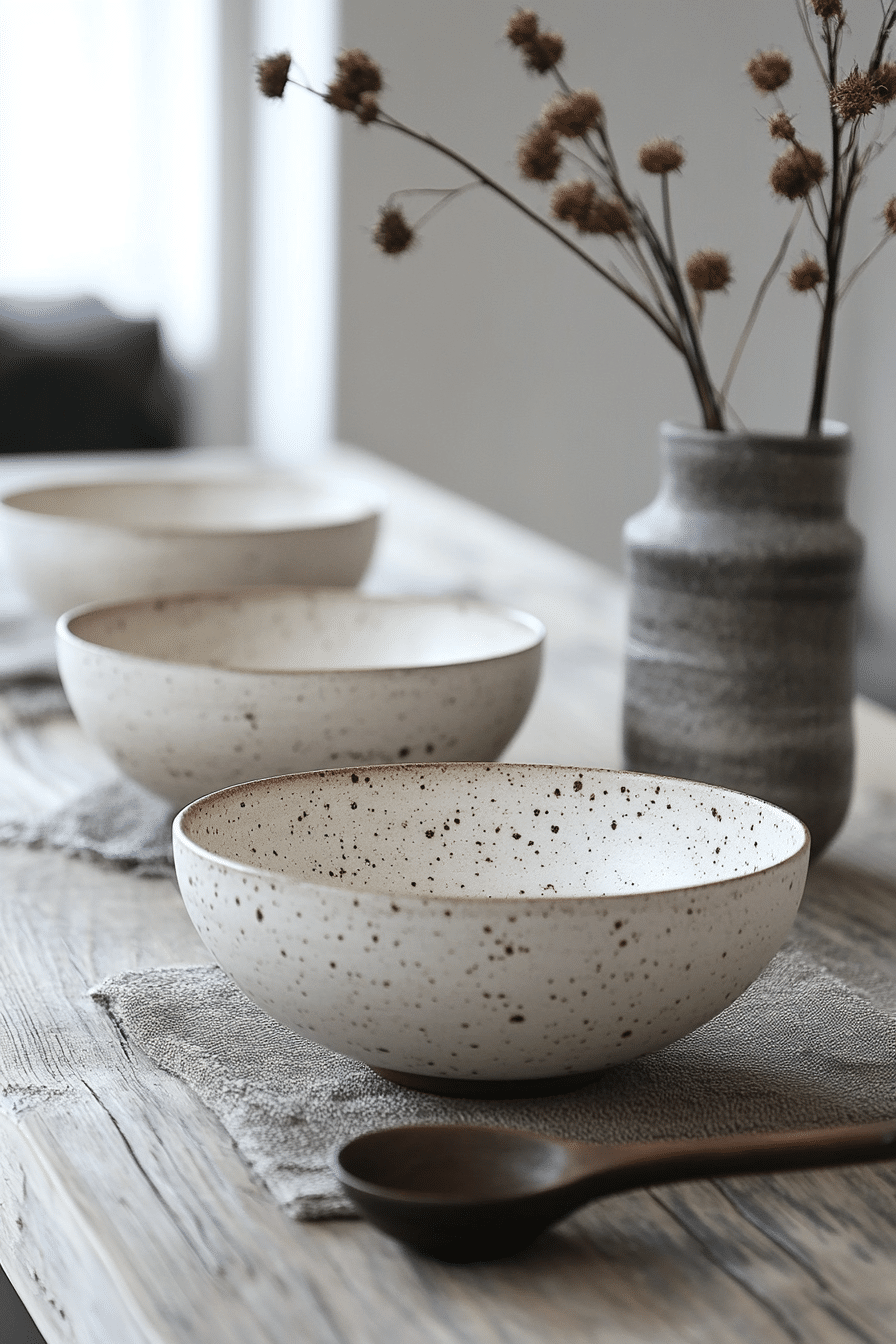
Raw Clay Charm in Wabi Sabi ceramics highlights the unrefined texture and color of clay without extensive glazing. These pieces showcase the natural beauty of the material, embracing its raw and earthy qualities. Bare clay ceramics add an authentic, tactile element to any space. They celebrate the Wabi Sabi principles of simplicity and natural imperfection.
11. Maker’s Mark
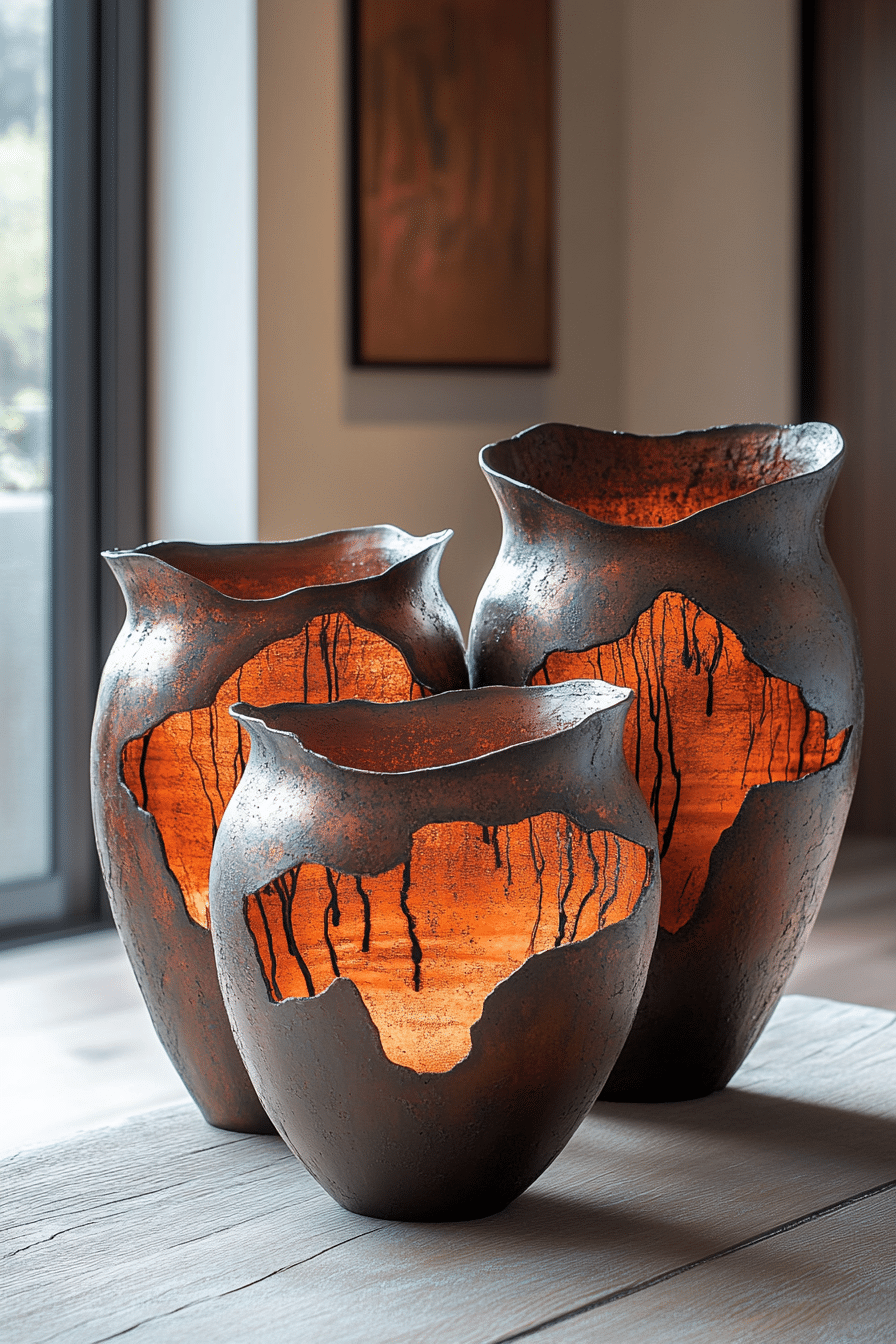
Maker’s Mark Wabi Sabi ceramics emphasize the personal touch of the artisan. Finger imprints and slight variations tell the story of their creation, reflecting individuality and craftsmanship. These hand-formed pieces embody the Wabi Sabi appreciation for imperfection and transience. They add a deeply personal and human element to any decor.
12. White Weathering
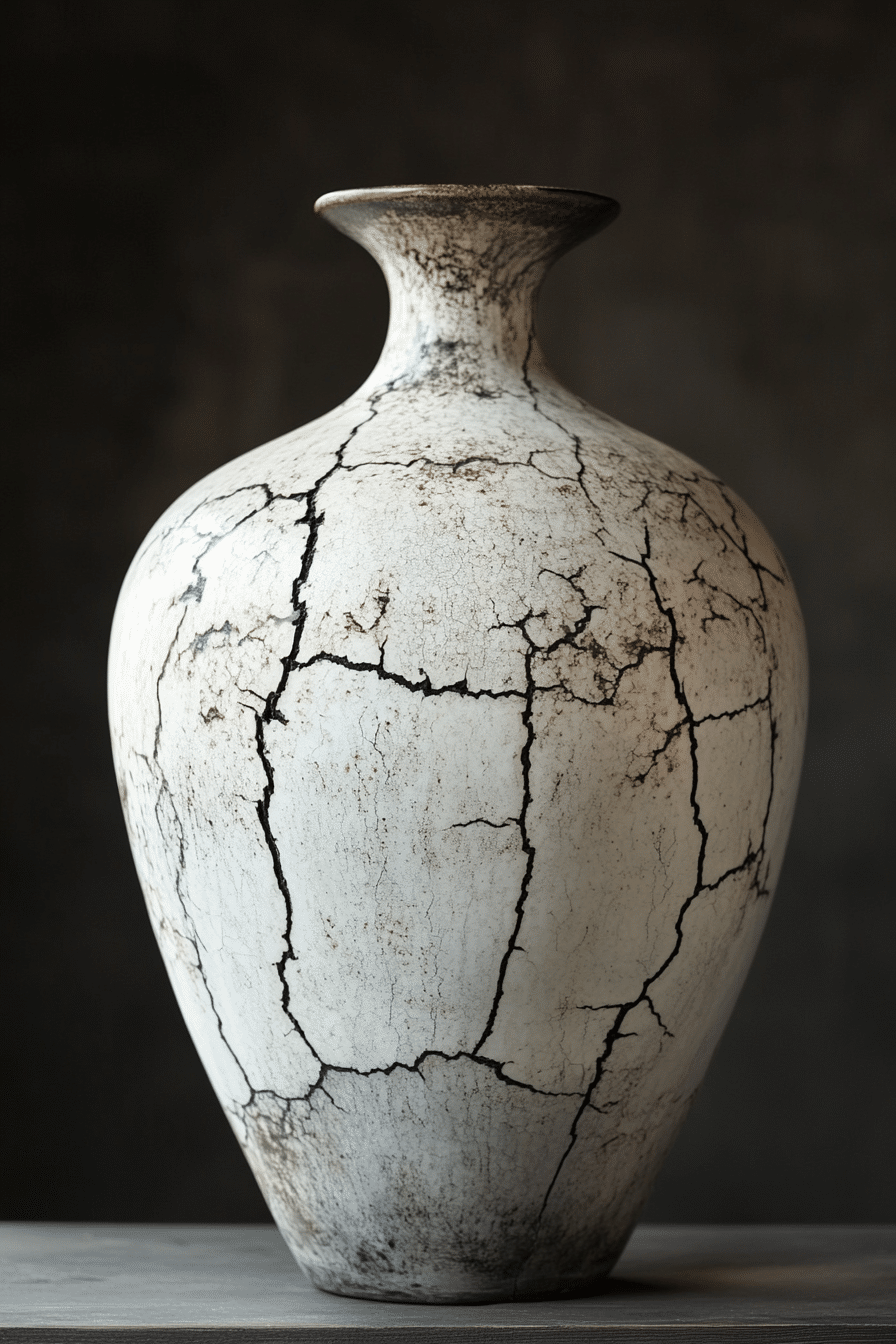
White Weathering in Wabi Sabi ceramics highlights light-colored pieces that develop a patina over time. The subtle discolorations and imperfections symbolize endurance and natural change. These ceramics add brightness while carrying a sense of history and life. White weathered pieces are perfect for enhancing Wabi Sabi-inspired interiors.
13. Tactile Textures
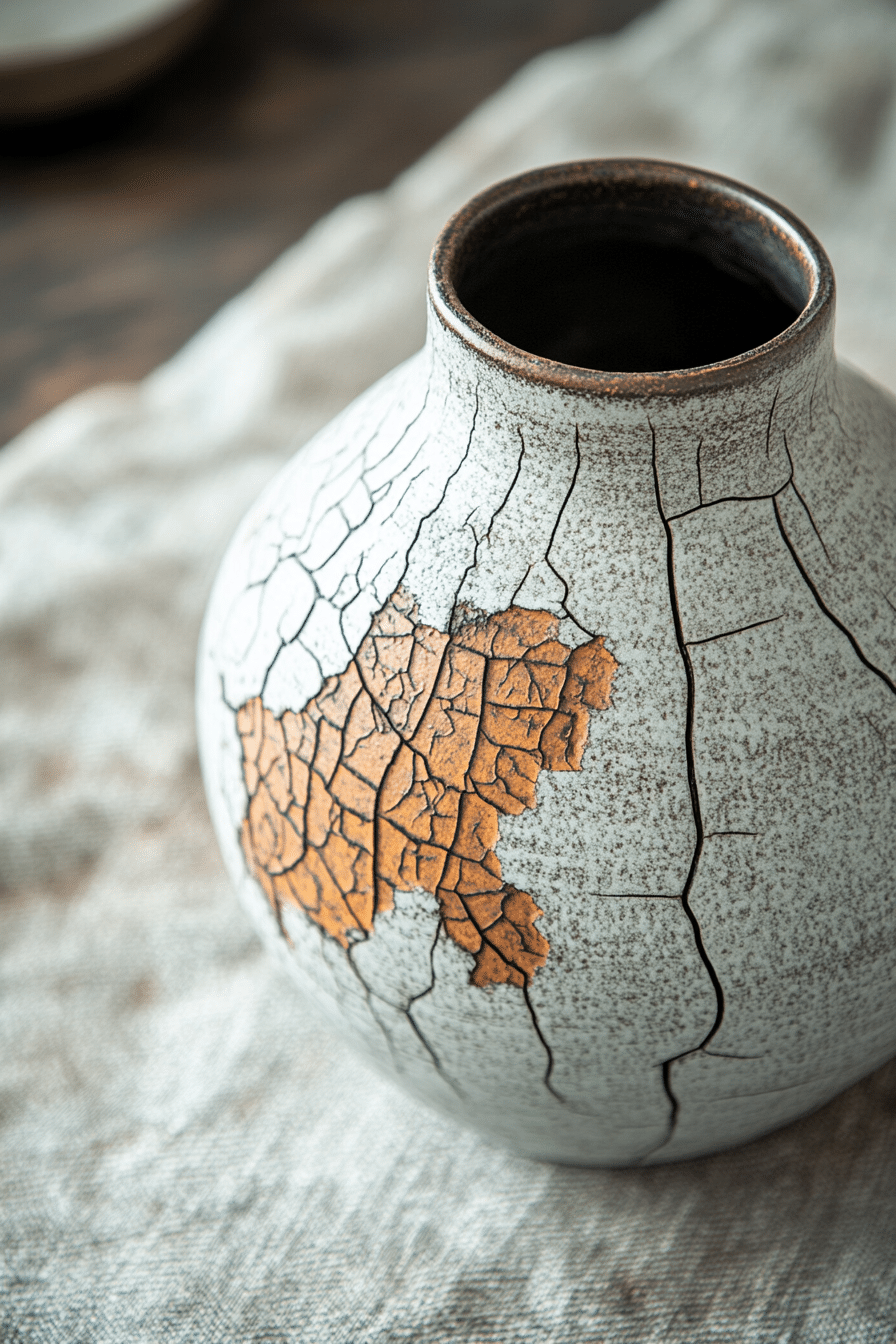
Tactile Textures in Wabi Sabi ceramics focus on surfaces designed to be touched and appreciated. Rough, smooth, or ridged textures invite sensory engagement, embodying the Wabi Sabi emphasis on materiality. Textured ceramics create dynamic and interactive decor. They’re perfect for adding depth and interest to any space.
14. Organic Openings
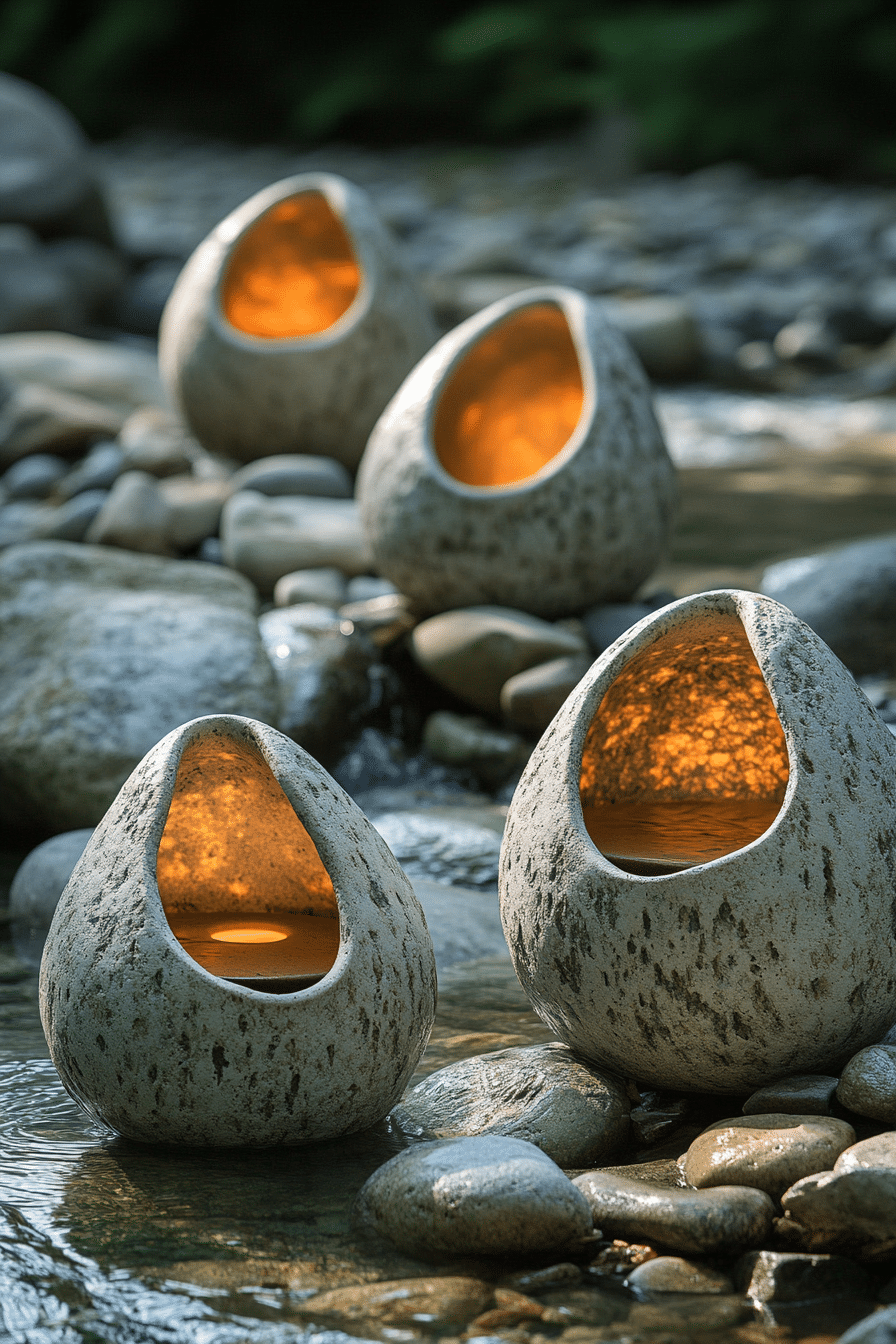
Organic Openings in Wabi Sabi ceramics feature vessels with naturally irregular edges. These forms mimic patterns found in nature, celebrating unpredictability and flow. Organic ceramics challenge traditional symmetry, adding sculptural intrigue to any interior. They perfectly align with Wabi Sabi’s love for the imperfect.
15. Primitive Coils
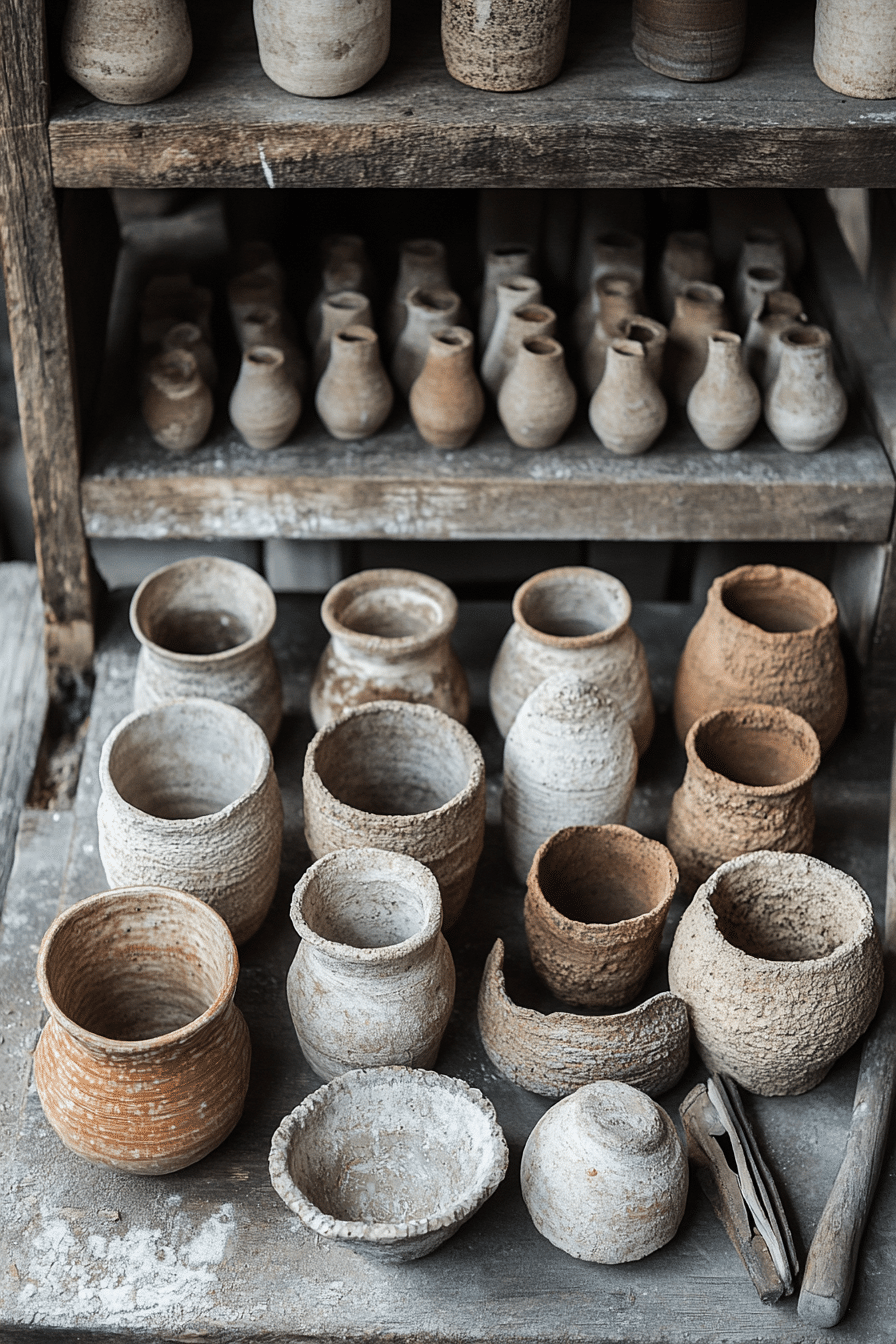
Primitive Coils in Wabi Sabi ceramics highlight the rustic charm of coil-built pottery. The visible coils and uneven surfaces emphasize the handcrafted process and its imperfections. These ceramics connect with ancient pottery traditions, celebrating history and authenticity. Crude coil pots bring artisanal warmth to any setting.
16. Stoneware Legacy
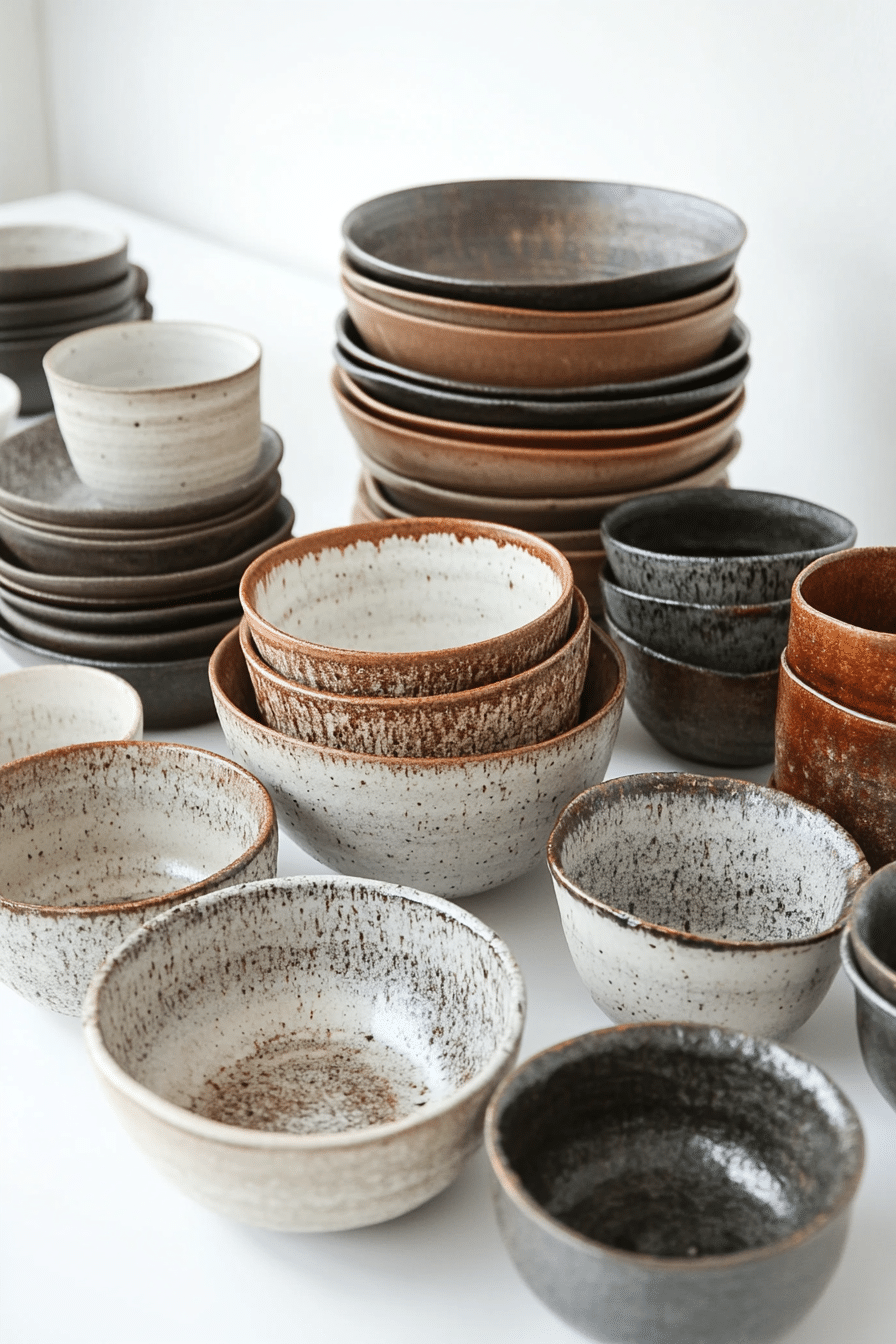
Stoneware Legacy in Wabi Sabi ceramics tells the story of durability and rustic charm. These pieces develop unique marks of use over time, such as subtle staining and crazing. Celebrated for their practicality and depth, stoneware embodies Wabi Sabi’s appreciation for beauty in daily life. These ceramics anchor spaces with their robust and enduring presence.
17. Raw Edges
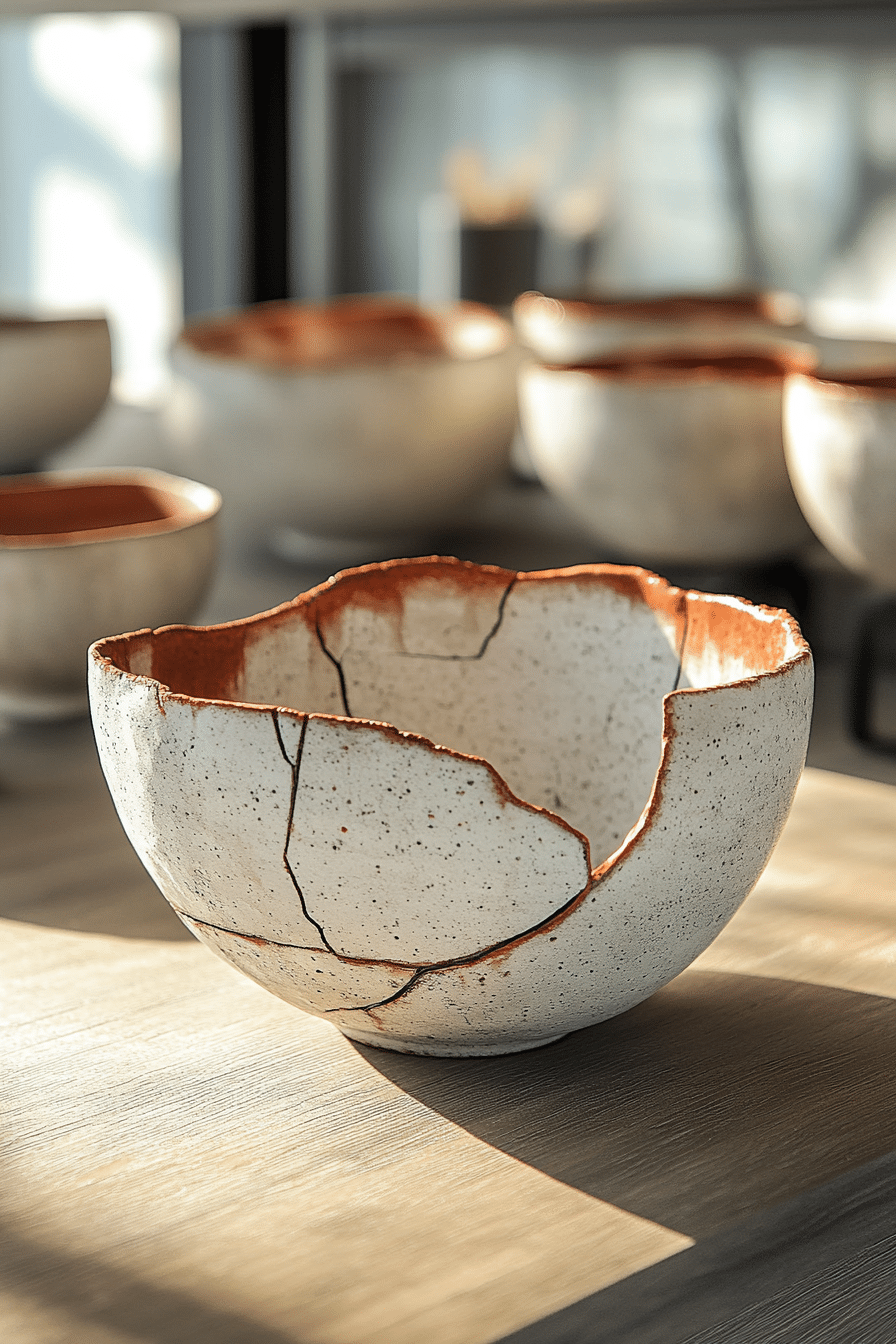
Raw Edges in Wabi Sabi ceramics celebrate the beauty of incomplete and rough finishes. Jagged or uneven edges create a striking visual element that challenges conventional perfection. These ceramics are a reminder of the transient and imperfect nature of life, embodying Wabi Sabi values. Raw edge pieces bring bold authenticity to any decor.
18. Glazed Movement
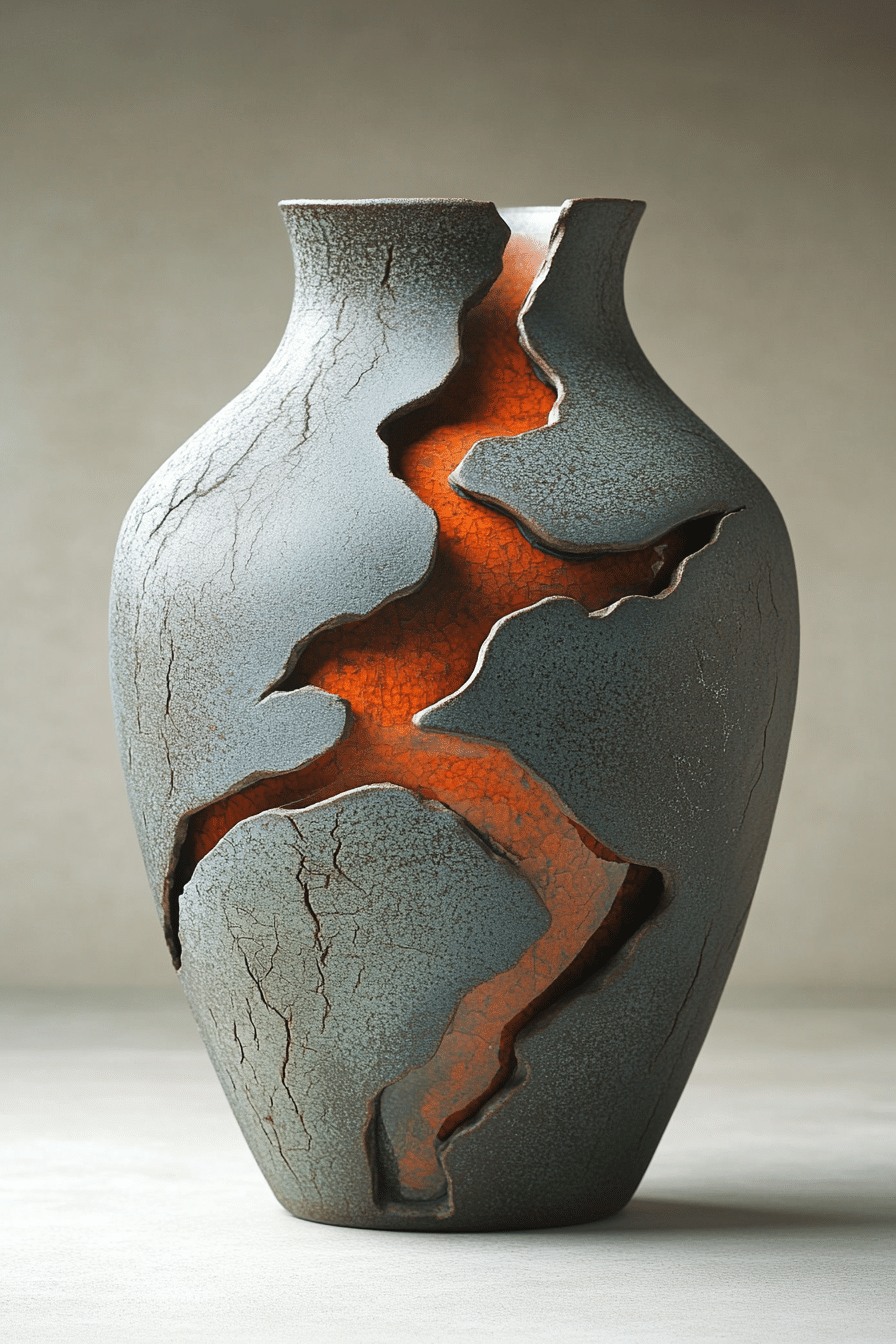
Glazed Movement in Wabi Sabi ceramics showcases the fluid and spontaneous application of glaze. The unpredictable patterns and effects add a personal, artistic flair to each piece. These gestures embrace imperfection, making each ceramic uniquely captivating. Glazed ceramics add an expressive, dynamic touch to Wabi Sabi-inspired spaces.
19. Burnt Beauty
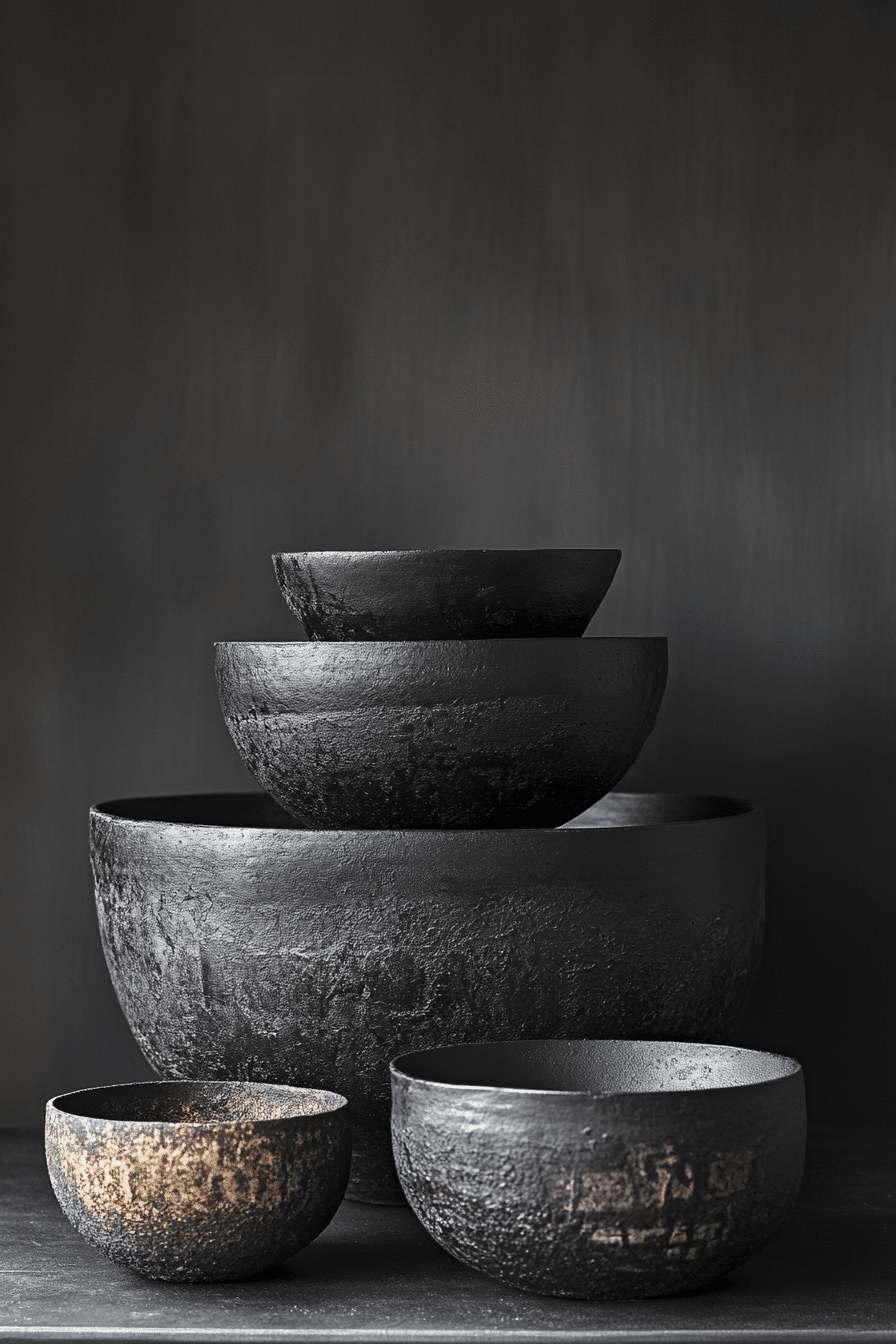
Burnt Beauty in Wabi Sabi ceramics highlights the transformative effects of fire. Charred surfaces and dramatic blackened finishes tell a story of endurance and change. These pieces add depth and contrast to interiors, perfectly complementing a subdued Wabi Sabi palette. Burnt ceramics create a bold, earthy statement in any space.
20. Golden Repairs
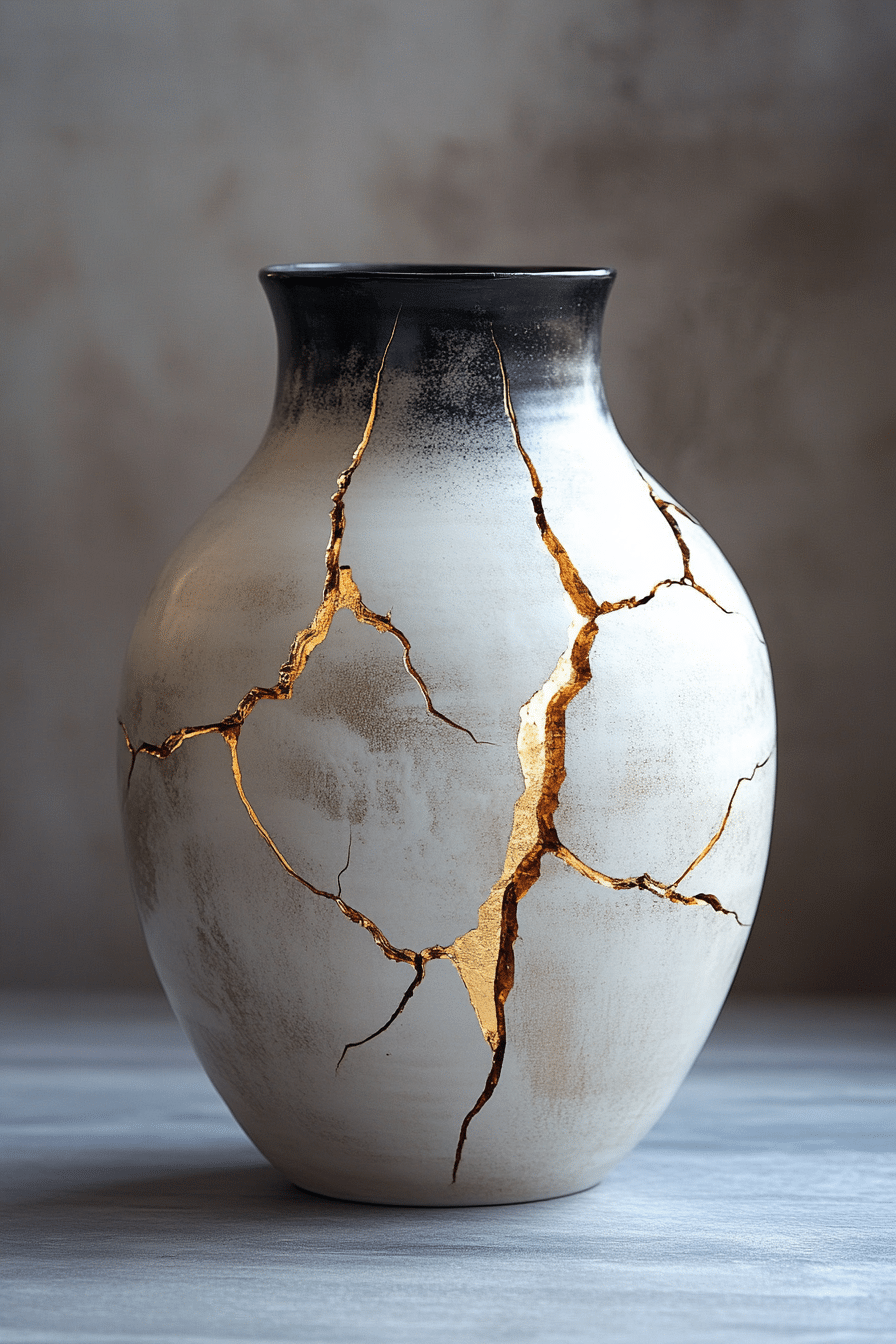
Golden Repairs in Wabi Sabi ceramics focus on the art of kintsugi, where broken pieces are mended with gold. The visible repairs honor the flaws and history of the object, transforming damage into beauty. Mended ceramics reflect resilience and renewal, core principles of Wabi Sabi philosophy. They add a profound and reflective element to any decor.
21. Elemental Forms
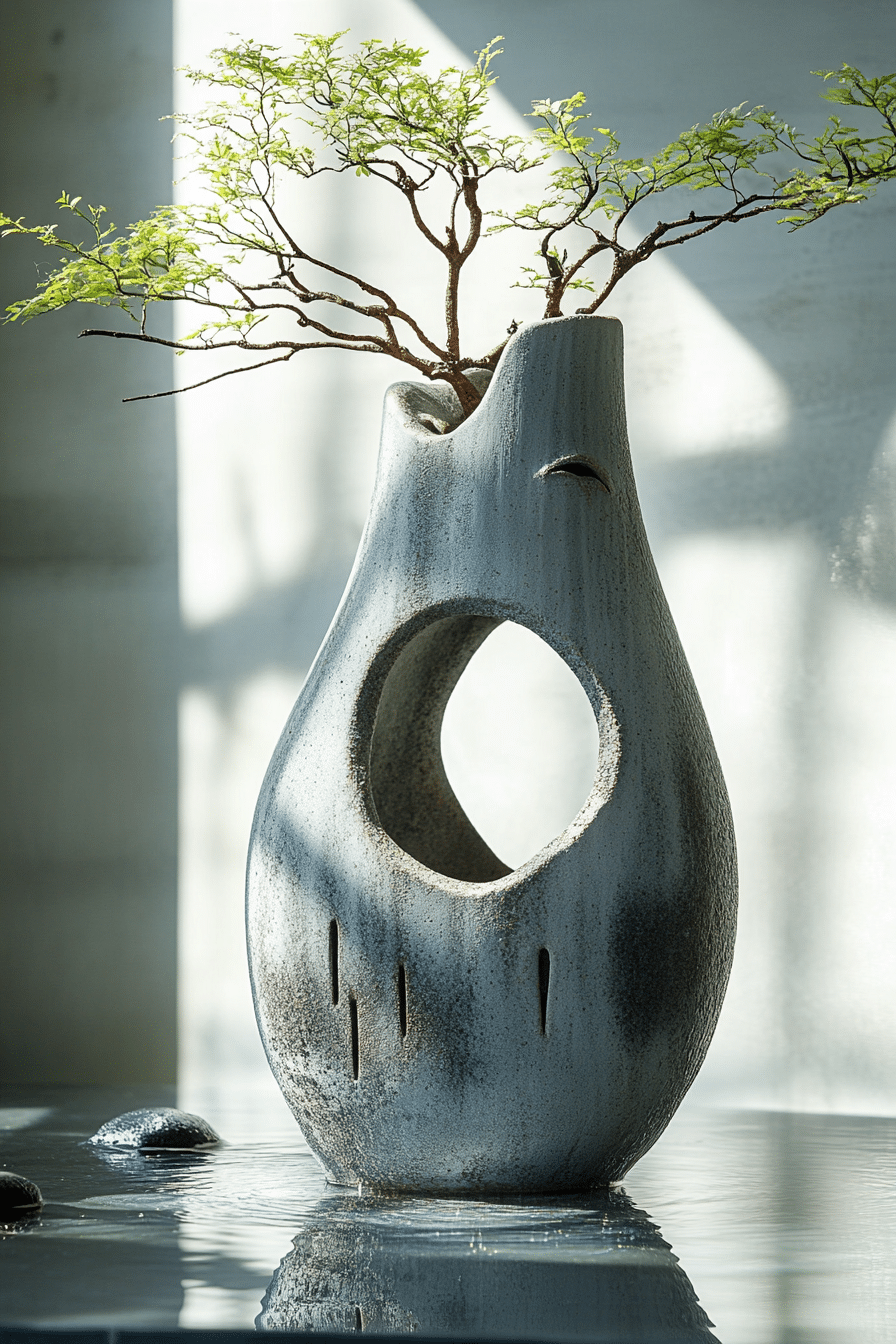
Elemental Forms in Wabi Sabi ceramics are inspired by natural forces, with textures and shapes echoing erosion, wind, or water. These pieces capture the raw beauty of nature, bringing a grounded, organic presence to interiors. Celebrating the influence of the elements, these ceramics align with Wabi Sabi’s love for nature’s unpredictability.
22. Rustic Textures
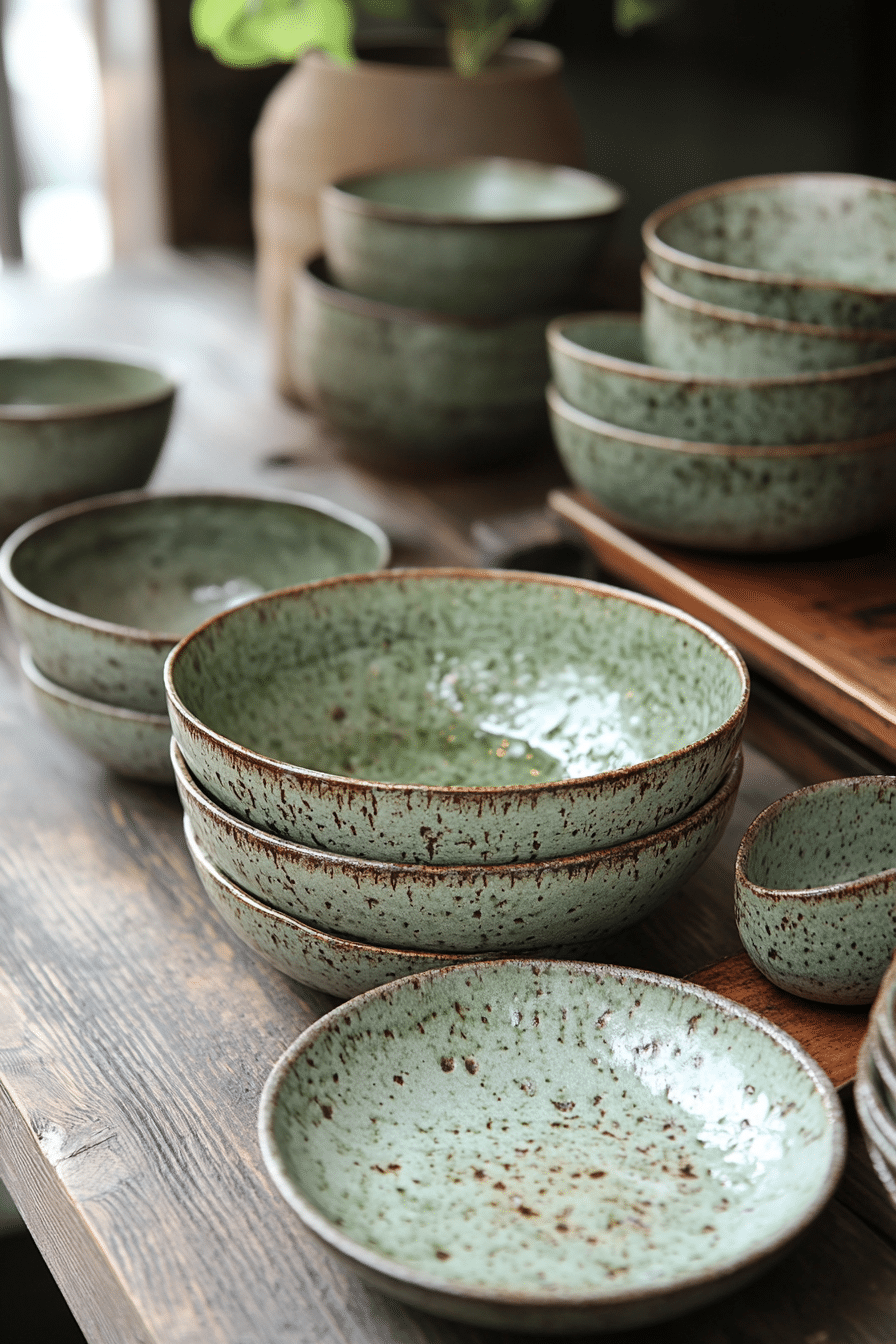
Rustic Textures in Wabi Sabi ceramics highlight the rugged, unrefined surfaces created by traditional or experimental firing methods. These rough textures invite tactile exploration and add visual richness to any setting. Rustic ceramics celebrate the untamed and unpolished, key aspects of Wabi Sabi aesthetics.
23. Turquoise Hues
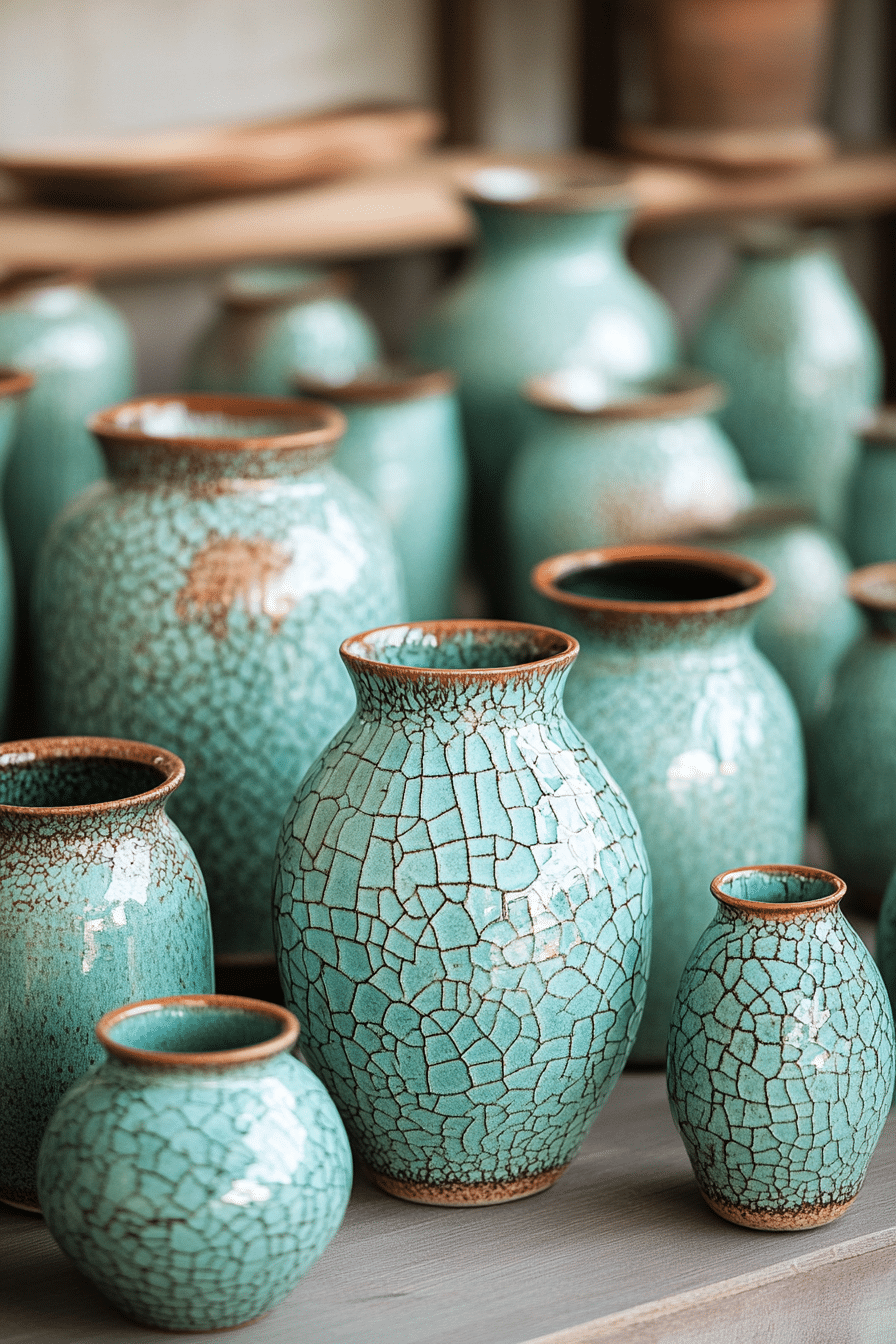
Turquoise Hues in Wabi Sabi ceramics introduce vibrant splashes of color into a neutral palette. The unpredictable pooling and cracking of turquoise glaze create dynamic and eye-catching effects. These ceramics bring a lively contrast to Wabi Sabi decor while maintaining harmony with natural elements.
24. Speckled Subtlety
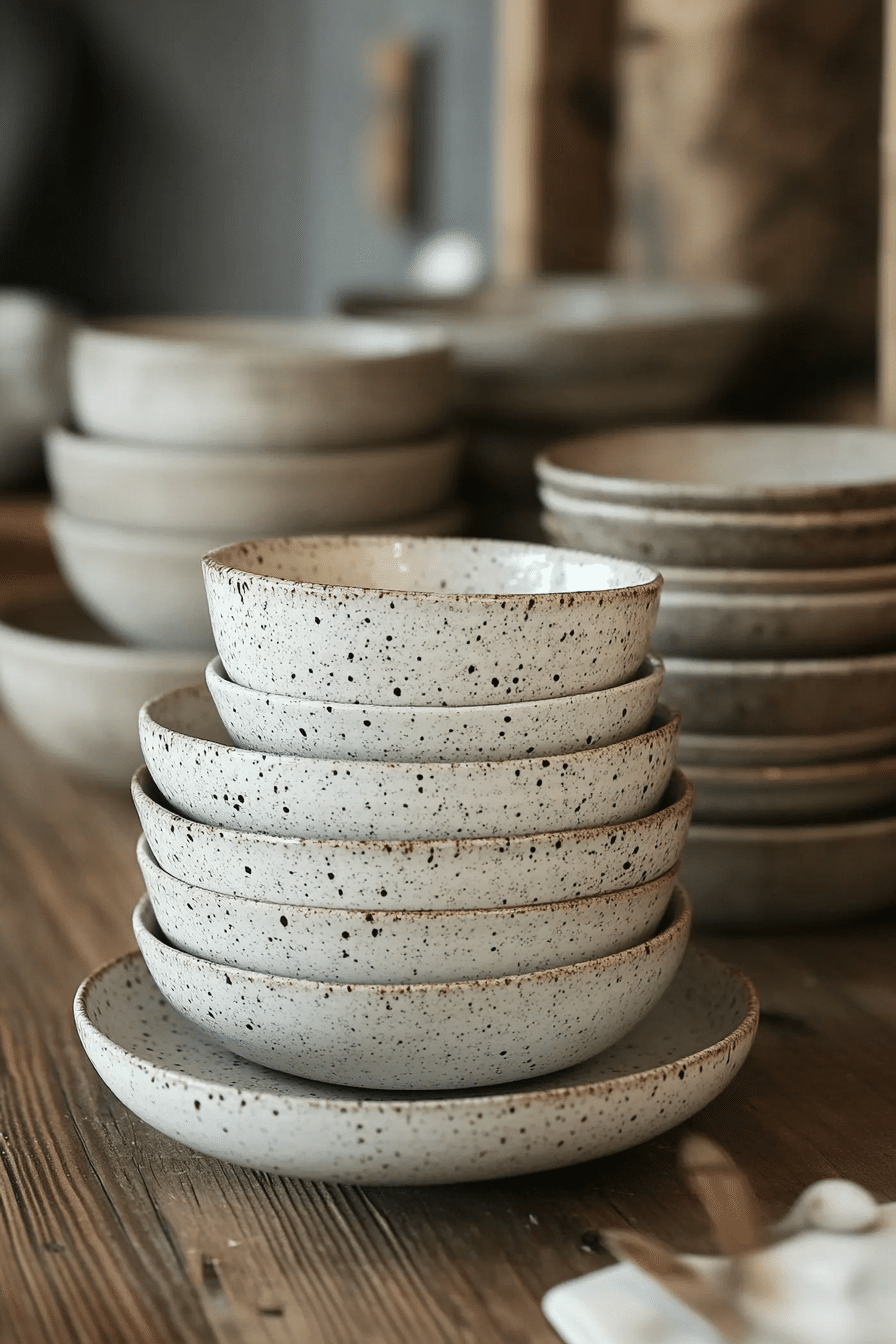
Speckled Subtlety in Wabi Sabi ceramics highlights delicate speckles in glazes, adding texture and depth. These natural effects emphasize the organic origins of the materials and celebrate understated beauty. Speckled ceramics are perfect for adding refined yet captivating touches to Wabi Sabi-inspired interiors.
25. Faded Charm
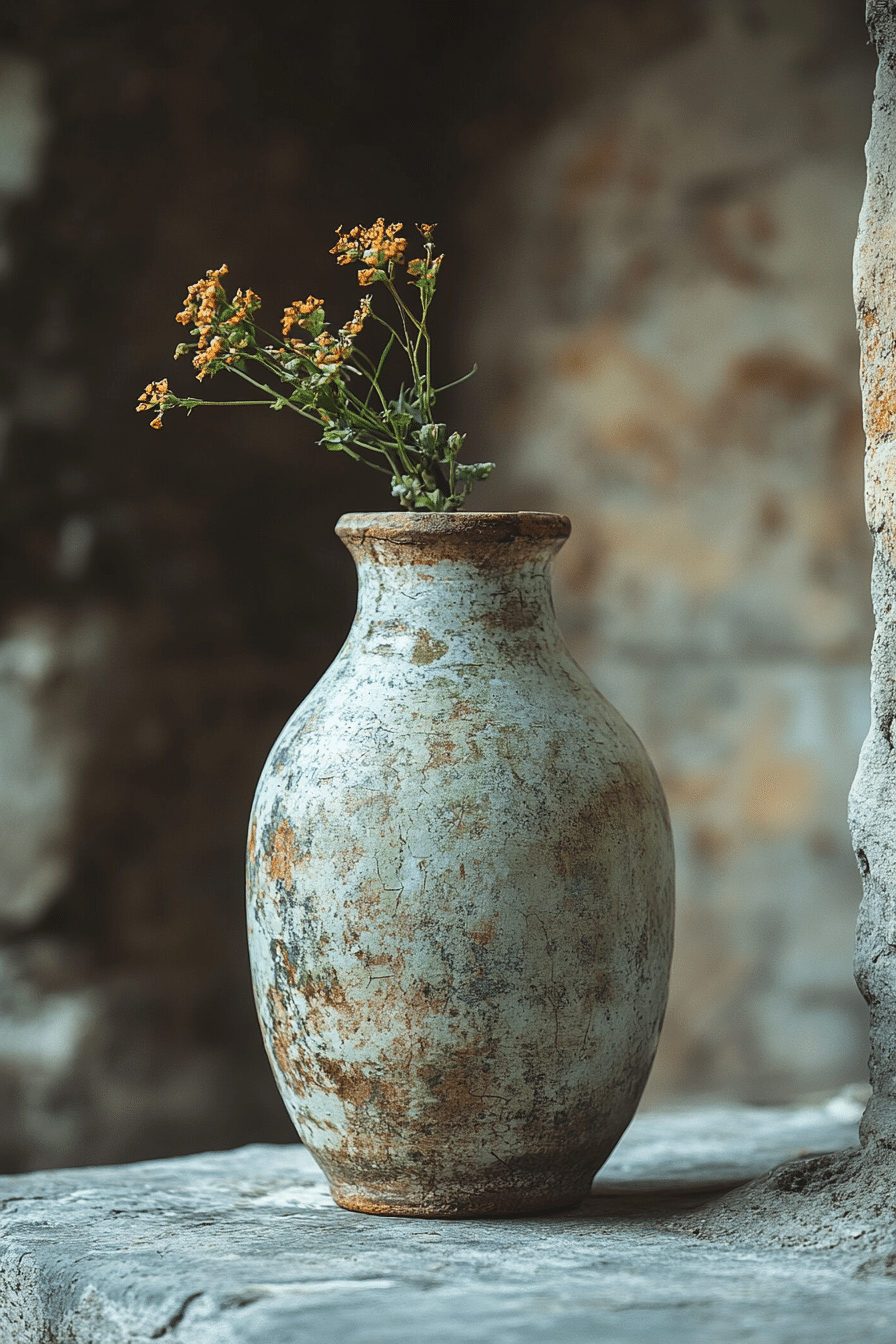
Faded Charm in Wabi Sabi ceramics embraces the gentle fading of colors and patterns over time. These natural transformations tell stories of history and use, embodying the beauty of impermanence. Faded ceramics add a layer of subtlety and nostalgia to any setting.
26. Wheel-Spun Wonders
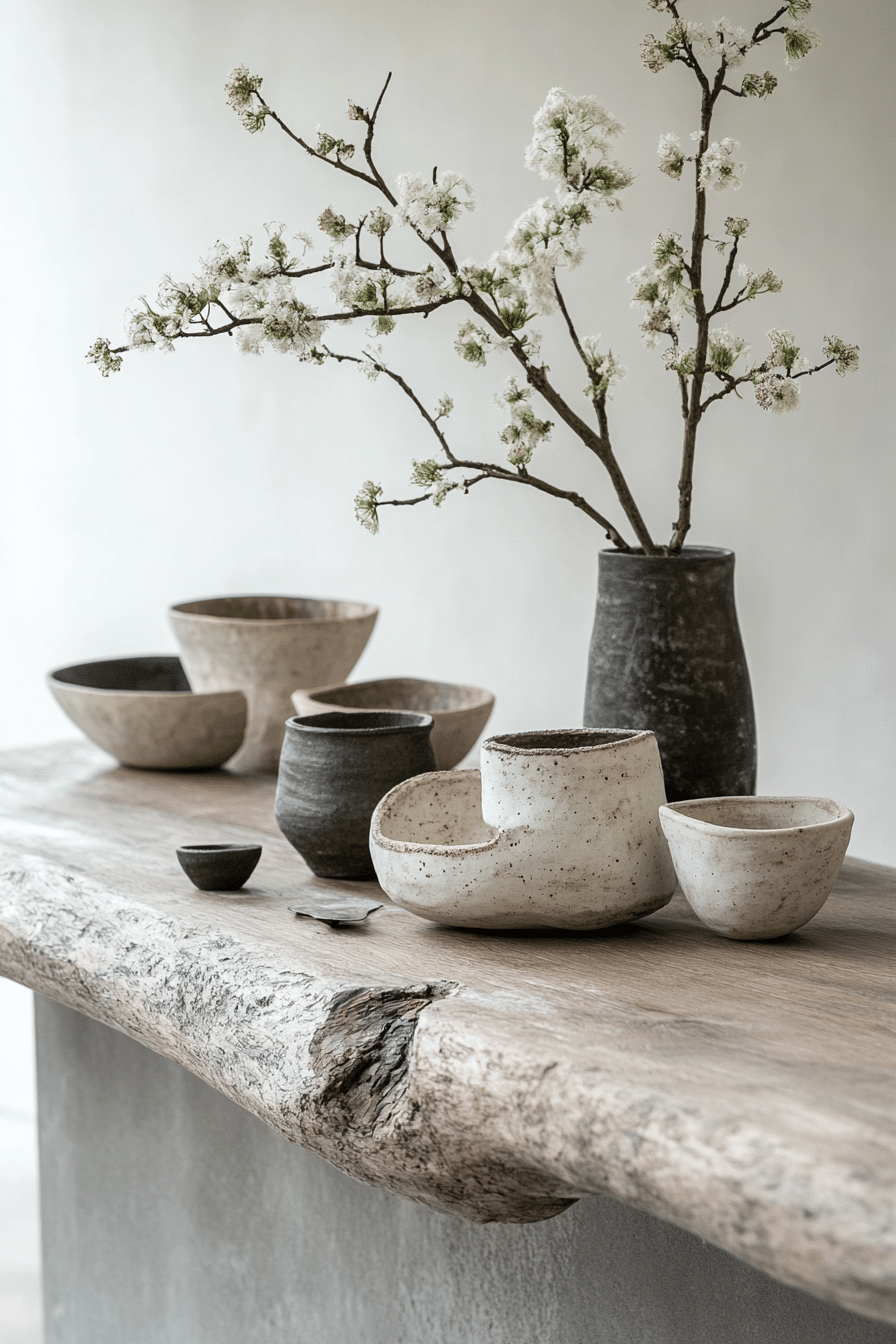
Wheel-Spun Wonders in Wabi Sabi ceramics feature hand-thrown pieces with slight variations that make each unique. These subtle imperfections reflect the artisan’s touch and celebrate the spontaneity of creation. Wheel-spun ceramics add a lively and organic energy to any interior.
27. Ash-Kissed Creations
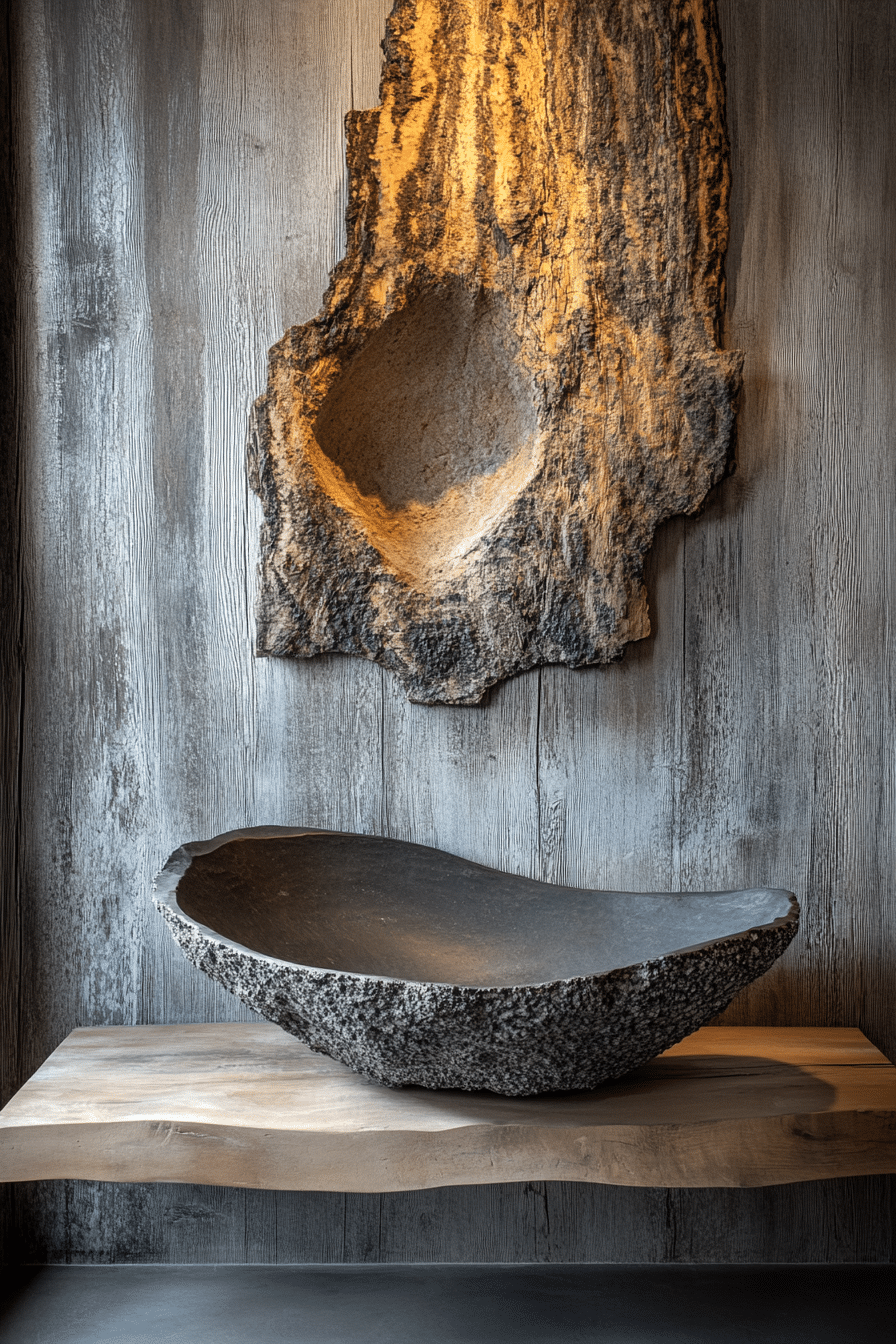
Ash-Kissed Creations in Wabi Sabi ceramics feature marks and colors created by wood firing. The ash and flame paths leave unique imprints on each piece, telling a story of natural transformation. These ceramics bring a primal and rustic feel to interiors, perfectly aligned with Wabi Sabi values.
28. Mixed Harmony
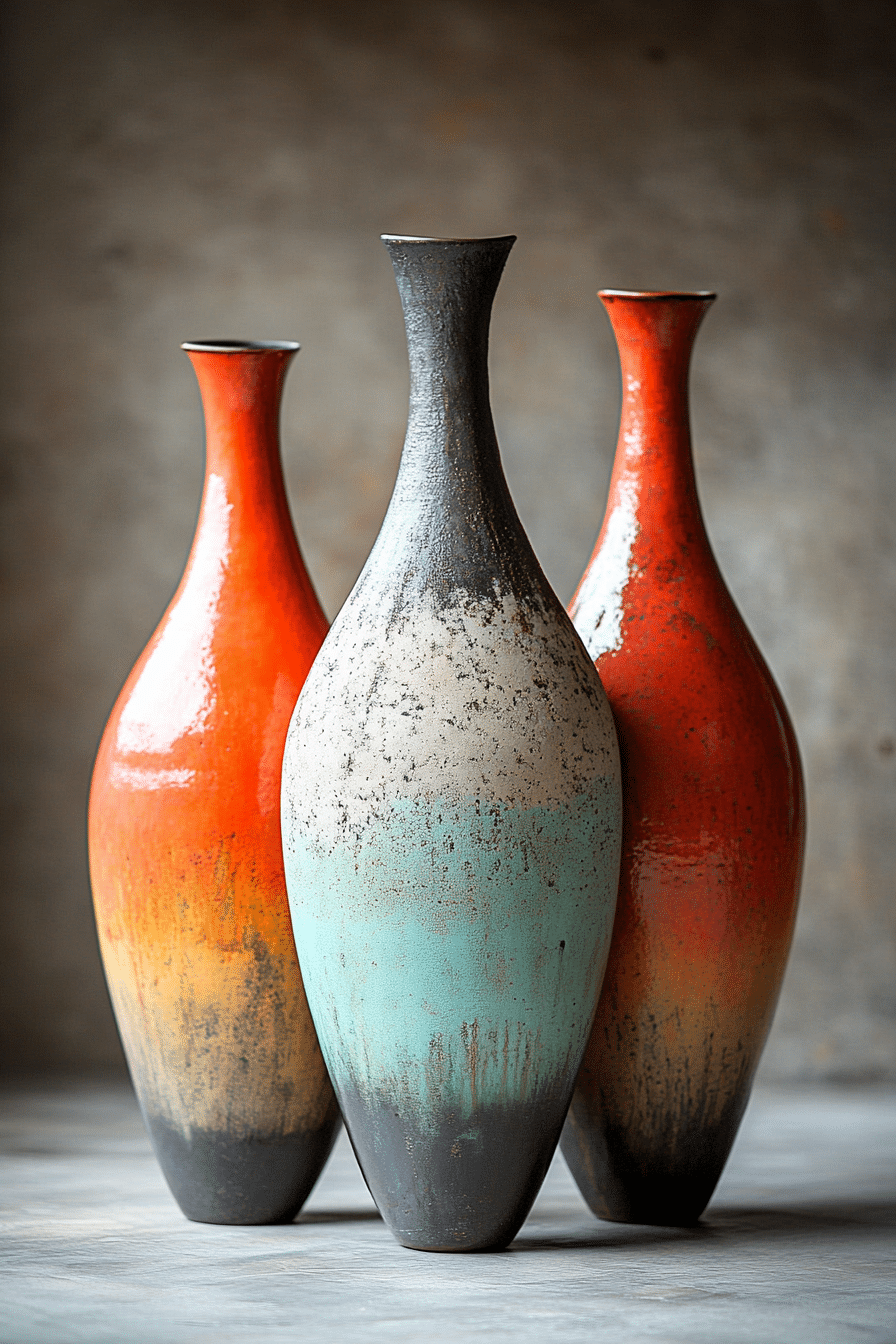
Mixed Harmony in Wabi Sabi ceramics celebrates the art of combining mismatched pieces into a cohesive ensemble. Each ceramic contributes its unique character, creating a harmonious yet eclectic display. This approach embodies Wabi Sabi’s love for diversity and imperfection.
29. Vintage Allure
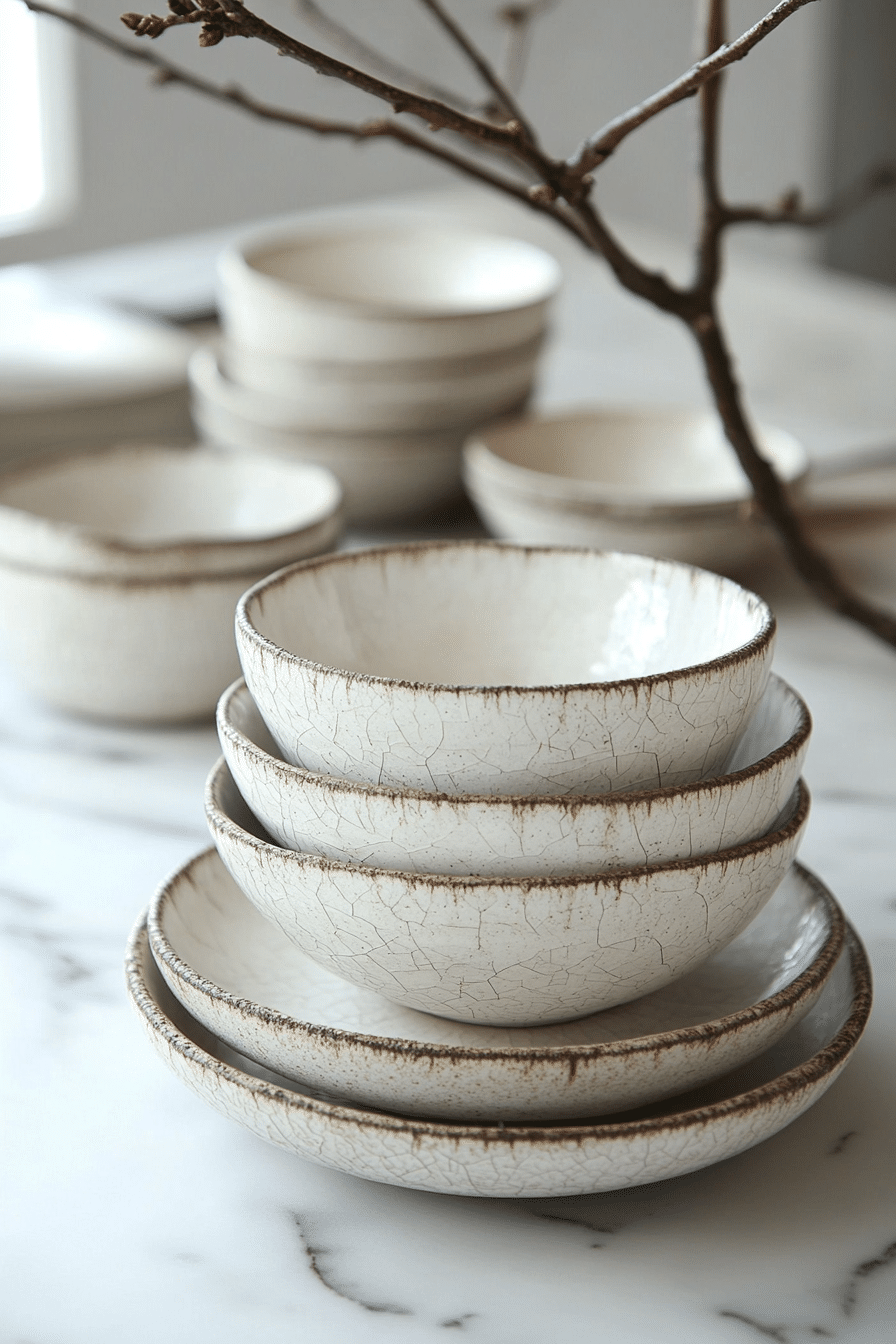
Vintage Allure in Wabi Sabi ceramics focuses on the timeless charm of older pieces that show their age. Crackled glazes, wear patterns, and signs of use tell a story of life and history. These ceramics bridge the past and present, adding depth and character to Wabi Sabi interiors.
Conclusion
These 29 Wabi Sabi ceramics highlight the beauty of imperfection and authenticity, bringing a unique and meaningful touch to your home. By embracing natural materials, handcrafted techniques, and organic forms, Wabi Sabi ceramics offer more than just functionality—they tell a story of craftsmanship and timeless elegance. Whether you’re curating tableware, decor, or statement pieces, these ceramics will add character and depth to any space. Let these Wabi Sabi ceramics inspire you to celebrate the art of imperfection and bring harmony to your surroundings.

